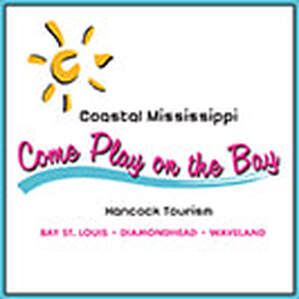The Parades, the Pageants, the Fairs and the Dances
The folks in "the Bay" have always known how to celebrate life. Join this party from the past in the latest installment of Pat Murphy's book-in-progress about historic Bay St. Louis, and you'll get an in-depth look into our community's festive past!
The Hotels, Grocery Stores and Bars Sleeping, eating and celebrating life: things folks in Bay St. Louis have always enjoyed - past and present! In this installment of Pat Murphy's book-in-progress about historic Bay St. Louis, you'll get an in-depth look into our community's past! A Walk in a Cemetery
With more than 200 cemeteries in Hancock and Harrison counties, these lovely last resting places are also home to art and history.
- by Rebecca Orfila, photos by Ellis Anderson and Rebecca Orfila
PH is the examination of the history of your locale through research and “on the ground” exploration. It invites the public to examine the historical nature of streets, buildings, cemeteries, and people associated with local history or families.
Cemeteries are either public or private. The large military and sometimes older city cemeteries are maintained by local, state, or national governments. Private cemeteries are maintained by private cemetery associations, owner families, or churches. There can be restrictions regarding access times and animals like dogs on cemetery grounds. Before visiting a private, family, or public cemetery educate yourself on the days and hours of access. The first activity is to identify research questions. What interests you? Which are the oldest cemeteries in a specific area? Which have the oldest burials? Where are the former leaders of the community buried? Is there a trend of deaths during certain years that could connect to years of disease or weather events? Are any monuments written in a language other than English? Practical historians can find the same information on their own by connecting with resources available from the Hancock County Historical Society (HCHS) and their onsite records and references, local history libraries, plus Internet resources like Ancestry.com (public and private genealogical resources and family trees), Genealogybank.com (old newspapers), FindaGrave.com, and other genealogical resources such as USGenWeb and Rootsweb. Based on the invaluable work performed by members of the Hancock County Historical Society plus USGenWeb and FindaGrave, we know three of the 65 Hancock County cemeteries are recorded in the Fourth Ward: Waveland, Fayard, and Gulfside Assembly. With these resources, it is possible to become well versed on the inhabitants of a cemetery prior to a field visit.
Our research for the oldest burials in the Fourth resulted in finding Francois Favre, who died in 1873, in the Fayard family cemetery (private). Favre was born in 1797 in Haute-Savoie, France, and served as a private in the 18th Mississippi Militia during the War of 1812. In Waveland Cemetery (public) off Dufour Road, a small grave dates to 1886 and holds the remains of one of three infants of the Dorsey family.
With names and dates in hand, a visit to local cemeteries is in order. So what are we looking for during our field trip? As in our initial research, we will be on the lookout for persons of interest such as family members, local families or persons (such as the burials identified above), or people important to the history and development of the local community. An additional activity in your review of a cemetery could be the identification of symbols seen on memorials and monuments. Symbols and figures on or around gravestones present more about the individual than simple names and dates seen commonly in modern monuments. Common symbols seen in cemeteries include the Christian cross, the Star of David, broken columns (a life cut short), a crown (soul’s achievement and glory of life after death), a dog (symbolic of a good master), dove (innocence and peace), and the weeping willow tree (perpetual mourning and grief).
There are three common forms of containment of the deceased in local cemeteries: gravesites for interment, mausoleums for aboveground, and columbariums for ashes contained in urns.
Whether engraved or not, the architectural styles and materials of monuments such as head- and footstones also inform our understanding of history with the aesthetics of art and design. In other words, we can tell the approximate age of a headstone by becoming familiar with architectural styles of an era. During the late 1700s and early 1800s, flat, horizontal ledge stones were popular and easy to engrave. As technology improved, monuments became vertical and symbols and information about the interred was added. The placement of graves within a plot may relate to religious beliefs or cultural traditions. Most Christians are buried facing east, though it is popular on our coast to be buried facing the beach. One funeral director told me that there is a tradition of a wife being laid to the right of the husband. There are many cemetery tours along the Mississippi Coast this season, even after Halloween. Take an educational and fun tour of a nearby graveyard and celebrate local history for yourself! Please note: The use of ground-penetrating radar or metal detectors should be approved by the cemetery owner or management prior to use. Remember that any excavation or the removal of materials in a cemetery without the permission of the cemetery owner and the gravesite owner is considered vandalism or theft. The Courthouse, the Law Firms and the Barber Shops
In this installment of Pat Murphy's book-in-progress about historic Bay St. Louis, you'll visit them all - even the city jail!
The Little Pink Cottage On Union
One of the most charming garden cottages in the Bay St. Louis historic district, "The Laughing Place" on Union has a colorful past - and present - thanks to owners Mack and Judy Pursell.
- story and photographs by Ellis Anderson
“He told me that I’d better get on back to the coast as fast as I could, because the workmen were painting the house pink,” says Judy, grinning. “He just couldn’t believe it when I told him that was exactly the color I’d picked!”
Mack and Judy both grew up in George County, Mississippi. It sits directly above Jackson County, the state’s eastern-most coastal county. Their families often took the short drive to the Gulf to boat and fish, so the Pursells both formed early attachments to Bay St. Louis. Mack remembers coming to the Bay for fishing trips as a child, while Judy sometimes visited a good friend who attended St. Joseph’s Academy on the beach (the site of the present day Our Lady Academy). Mack and Judy attended Perkinston Junior College (founded by Judy’s great uncle) and then USM before marrying and moving to Baton Rouge. They’ve lived in the River City for the past forty years, raising a son and a daughter there. Mack spent nearly 30 years working for State Farm Insurance, and then 17 years ago he “retired” to open his own insurance-related business: an auto collision shop. Meanwhile Judy operated Judith Pursell Interiors and worked as a popular interior designer. Through the years, the Pursells made frequent trips between Baton Rouge and Lucedale in George County to visit family. Often, they’d detour to the coast and swing through Bay St. Louis. After the children were grown, they began contemplating a second home on the coast. While the beaches in Alabama and Florida may have been more popular, the short drive between Baton Rouge and the Bay would make it possible to visit the coast almost every weekend.
In 2000, the fantasizing ended and the shopping began. The Pursells worked with realtor Marlene Logan. They’d been looking for three months when a new “for sale” sign popped up at 201 Union. But the market in Old Town was sizzling and several people had already viewed the house before the Pursells got a showing, only three days after it went on the market.
The walk-through was not encouraging. The 1600-square-foot house had been used as a rental for several years and needed lots of work. However, one big plus was the postage stamp yard. Their ranch house in Baton Rouge has a full acre of grounds, and as much as both Pursells enjoy gardening, they were looking for a light load in their second home. And Judy’s interior designer’s eye saw the cottage as a blanck canvas with unlimited possibilities. Mack made an offer the same day they first stepped inside and on August 15th presented the house as a gift to Judy for their 34th anniversary. “Nothing in here was pretty,” says Judy, remembering those early days. “When our daughter saw it, she said, ‘The first thing you have to redo is that little bathroom off the kitchen. That’s the ugliest thing I’ve ever seen in my life!’”
They followed their daughter’s advice and then spent weekends and vacation time slowly working their way through the rest of the house. In addition to multiple renovation projects, Judy tiled the kitchen countertops and backsplashes with a mosaic of vintage dish and pottery shards, the first of several interior and exterior mosaic projects. Antique-dealer friends would save their shop casualties for her. She’d also scour garage sales looking for colors and textures she liked and buy undamaged pieces. When she was ready to start working, she put on goggles, sat on the back steps with a hammer and “broke up stuff for days.”
A friend who wanted to learn Judy’s mosaic technique helped her lay the floor of the front porch. For eight days, the two friends sat on pillows while they fitted colorful tile pieces together. “That’s when I realized something was wrong with my brain,” says Judy, laughing. “I’m missing the part that says ‘Don’t do that! It’s too much trouble!’”
The kitchen cabinets were another stroke of creative genius. The Pursells purchased new doors to replace the dated, worn ones. Judy had read about a technique to age them using Rit dye on raw wood. She then applied a glaze to add depth and character.
“Of course, Katrina helped me out,” she says. “They look a lot older now than they did when I finished them.” In 2005, about the time the Pursells were beginning to see light at the end of their restoration tunnel, Hurricane Katrina forced three feet of water into the cottage. Debris from other buildings and the force of the surge structurally damaged one corner of the house. The couple rolled up their sleeves and started over. Judy turned into a salvage queen while the couple worked through the aftermath. When beaded board wood was ripped out of other historic houses and left at the curb for garbage pickup, Judy would save it from the debris pits and carry it back to the cottage. Those salvaged scraps eventually became a charming wainscoting that replaced the bottom three feet of every wall that had been ruined by Katrina. When the Corps of Engineers began tearing down another damaged house in town, a Judy was able to save the beveled glass doors before they bulldozer crushed them. The doors now have a new function as a charming divider between the living room and the closed-in porch. 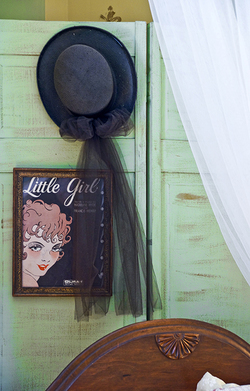
While the Pursells didn’t make any major new changes when restoring the second time around, Judy keeps adding to the whimsical nature of the house each year. When asked what style it is, she’s not able to pinpoint it. Shabby chic? Not exactly. Garden cottage? Well, maybe.
“I see things and colors that seem perfect for the cottage and find a way to work them in,” says Judy. “I experimented with the cottage from the beginning, trying things I’d never have done if I was living in a house day in and day out.” Judy’s experiments only show her superb instincts and training as an interior designer. There’s the French bedroom for the granddaughters that incorporates French flashcards that her mother used for teaching the language. In the bathroom that doubles as a gallery for collectibles, the showpiece is a restored claw-foot tub that was original to the house since 1929. The gas fireplace in the living room is a recent add-in, yet looks like it was an integral part of the original house. And everyone’s favorite detail, the antique plates that can be seen by passersby through the window. 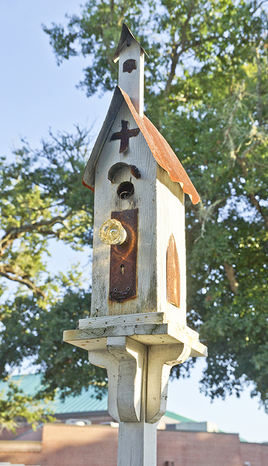
Outside, the Pursells’ green thumbs are evident. Blossoms spill over the ribbon strip of property that separate the house from the sidewalk. A picket fence captures a private nook of yard on Second Street, while in the back, a deserted driveway has become a charming gated courtyard shared with the house next door (belonging to neighbors Paulette and Glenn Bohne). Judy’s mosaic tile work on the side porch makes the intimate place sing with color and whimsy.
Now Mack has turned the Baton Rouge business over to his son and Judy has downsized her business, the couple are spending more time in the Bay. Even though their corner is a busy one — at least by Bay St Louis standards — Mack says it’s a serene spot. Both Pursells enjoy the fact that they’re just steps from the beach and the shops, restaurants and galleries of historic Old Town. Soon they’ll be celebrating their 50th wedding anniversary, their 16th in the Laughing Place. “We get the best of both worlds here,” says Judy. “We’re still part of Louisiana — which we love — and we’re still part of Mississippi. Nothing could make us happier.” Al Lawson - On Design
It’s a uniquely human endeavor to decorate our domicile. It is something that visually communicates who we are and articulates what we value. I am always fascinated to see the elaborate collections people have created in their homes --- whether it is vintage dishes or an unusual collection of tchotchkes.
Whatever people choose to collect or decorate with - I am reminded that they have an identifying interest and find meaning through their collections. I first witnessed this design concept in Italian homes that displayed ceramic plates on their walls from restaurants they had visited. The plates were beautifully painted and helped the memory of a wonderful meal or remarkable evening last longer. And I love seeing anything that shares a love for the fanciful, celebratory or simply beautiful. It’s so inviting when it is combined in a home filled with joy and warmth. Thank you everyone that shares your home with us as we read The Cleaver. We are grateful that we have been able to glimpse a little of the special spaces where you find peace and happiness . The Green House
Looking over the picket fence at the historic Waveland home of Liz Stahler and Kevin Breaux, visitors probably won't notice the addition on the back that makes this cottage into a spacious hub for extended family and friends.
- story and photos by Ellis Anderson
Located on Jeff Davis Avenue, Lili says the original house was probably built for workers at the Ulman Woolen Mill, located around the corner on Nicholson Avenue. The cottage consisted of a central hallway with two bedrooms on either side. A kitchen and bathroom serviced the house from the back.
Niceties like living rooms and dining rooms common in middle class houses weren’t part of the plan. Apparently, life was all about sleeping, going to work, eating and then doing it again the next day. The porches provided all the living space a mill worker would need. Bay St. Louis historian Charles Gray placed the construction of the house in the late 1800s, probably the 1890s. His estimate is based on the fact that the bead board lining the walls runs horizontally. A few decades later, it became fashionable to run the wood in a vertical direction. Waveland represented paradise to Lili’s family, who would come over from New Orleans most weekends and holidays. After Lili married, her husband, George Stahler, fell in love with the cottage as well.
Liz became the second generation of the family to build fine memories in the Green House.
“We’d come on weekends and all the holidays – of course, more during the summer when it was hot. You’d come over here, put on your bathing suit and wouldn’t take it off until you went back to New Orleans. “My dad was a fisherman and we all loved to fish,” she says. “But bringing five little girls fishing meant he didn’t get much done himself. He had a lot of patience.” Eventually, the patient man began seeing ways he could make the house more comfortable for entertaining their growing family. First, he took down the walls separating the two east bedrooms and opened them up to the hallway, creating one big living space. He added a fireplace. As their children left the nest, two other bedrooms merged into one larger one – with closets and storage built in. The kitchen and bath expanded too. When George and Lili decided to sell their New Orleans house and move to Bay St. Louis full time, they knew they’d have to make even more changes. The beloved green cottage simply wasn’t large enough for the open arms lifestyle. The addition itself would be 3500 square feet, most of it in one open, vaulted living area. This would more than double the square footage of the historic cottage, which was only 1500 square feet. Yet, Bay St. Louis architect Michael Reeves designed the addition so that it nested cleverly behind the original house. To passersbys and neighbors, the quaint mill workers’ cottage appeared unchanged. Inside, the front cottage opened up into a grand living area where generations of family could comfortably dine, visit and relax. Sadly George didn't get to live very long in the house after it was completed. After his death in 2008, LiLi didn't see where it made sense to have all that space for herself. She downsized and moved next door to another smaller historic cottage on the family's compound. The next generations moved into the Green House: Liz, Kevin and their teenagers, Sam and Sarah.
While the Green House only has three bedrooms and three baths, the bedrooms are large enough to accommodate multiple guests and two half baths make it easy to share. With a revolving cast and crew of family, children, friends, college buddies and high school pals, every square foot of the original house and the addition has came in handy.
“When the kids were in college, the bedrooms were nothing but beds,” says Liz smiling. “You’d wake up in the morning and there’d be students sleeping everywhere. We’re a typical blended family, but we also have many children who weren’t actually born to us. They all know they’re welcome.” “Of course, it usually looks like a tornado because they all come in with food and purses and bags. That doesn’t bother me. There are some things more important than worrying about clutter." The living spaces inside the house blend and merge with the ones outside, where live oaks, a lush pond and groves of bamboo beckon. A pavilion, a screened porch, open deck and inviting front porch all provide intimate nooks for conversation, even when the house is brimming with guests.
Kevin, who’s a contractor at Stennis Space Center, knows every inch of the house. He’s the one who built the addition for Liz’s father. The couple got to know each other during the construction process, with George playing matchmaker.
“He loved the idea that Kevin could teach me how to use power tools safely,” says Liz laughing. But it’s clear that her dad’s concerns weren’t misplaced. In addition to having worked as an international paralegal, comptroller and business manager, Liz is a fearless DIYer. For instance, the front porch of the house had been screened as long as anyone could remember, but Liz had seen an old photograph of the house without the screen and liked the way it looked. Several attempts to persuade Kevin to give it a go were unsuccessful. So one day, while he was getting a haircut on the other side of the coast, Liz took a hammer and set to work. By the time her husband arrived home, the porch was free of screening. “When he got home, I was sitting here pretending nothing had happened,” she says. They both laugh at the memory. “But once he saw how it was going to look, he got all into it.” One project still in the works is repainting the house. The couple had completed the front part when a seemingly endless round of road work on Jeff Davis forced them to postpone completion. A set of dormers in the back is the main telltale sign. It’s a darker shade of green. “That old original green paint,” remembers LiLi Stahler. “I don’t know how they made it, but when you leaned against it, it rubbed off on you.” While the new paint might not leave stains on your clothes, guests can testify that the Green House on Jeff Davis definitely makes a mark on memories. Al Lawson - On Design
Frank Lloyd Wright, the esteemed architect, had a special appreciation for how buildings and people interact. His goal for the homes he designed for his clients was to uplift the spirits of those who lived in or visited them.
Perhaps we could say he was designing an opportunity for grace in addition to designing space. It's particularly interesting to see what he thought would contribute spiritually to peoples' lives in a building. One of those elements was a hearth or fireplace. He is often quoted as saying, "The hearth is the psychological center of the home." Wright knew that the hearth or fire was the historical gathering place for people. He respected the social aspect of people and how they knit in communities. He took advantage of the opportunity to use space to facilitate living in harmony with nature and simplicity. Many of us are professional designers or architects who share these same ideals and emphasize them in our projects. I have joyfully entered many homes and found not only "hearths," but "hearts" in them. People know that home is the special gathering place for their tribe or clan. As a designer, my hope is that we all will consider how we can meaningfully and, if you will, spiritually, consider our precious home spaces — and incorporate grace thoughtfully in those spaces. Here's to a life full of beauty and love! No-Man's Land
The letters of one pioneer family who lived in west Hancock County in the late 1800s paint a vivid history of our rural county during the Civil War. Meet the Koches.
- by Marco Giardino, Ph.D.
Marco Giardino, Ph.D., is a retired archaeologist who worked with NASA at the Stennis Space Center in Hancock county, Mississippi. In that capacity, he has studied extensively the people and communities that preceded NASA's presence in the area. He makes his home in Bay St. Louis. Russell Guerin is a retired insurance executive who found new opportunity to pursue his passion for local history when he bought a home in Hancock County ten years ago. Having spent his summers there as a child and long weekends in his working years, he had become aware of the rich history of the area. His retirement made it possible to research the early settlers and their stories.  Click here to view on Amazon. Also available at Bay Books on Main Street, and the Hancock County Historical Society on Cue Street Click here to view on Amazon. Also available at Bay Books on Main Street, and the Hancock County Historical Society on Cue Street
Christian Koch was a prominent citizen of Logtown in the mid-1800s. He was a Danish Sea captain who first visited the area around Pearlington in the early 1830s. In his diary, Koch described Pearlington as a small, insignificant town, where the only trade was in wood and cotton with New Orleans. He commented that it was situated “in the midst of a large pine forest owned mostly by the government.”
In 1841, Christian married Annette Netto of Bay St. Louis, and in 1854 they settled in Logtown, on Bogue Houma bayou, which bounds Logtown on the north. The Koches were letter writers. Hundreds of these letters covering a period from 1829 to 1883 are housed in the Hill Memorial Library at Louisiana State University. Many of these letters date from the Civil War, when Christian and his schooner, The Experiment, were embargoed by Union troops at Fort Pike while Annette struggled to raise their 12 children and to keep their Logtown farm running. Koch had no sympathy for the Confederate cause; in fact, in a letter from 1854, he noted that there was more liberty in Denmark than in the southern states. When Federals seized his schooner in 1862, he wrote to Annette that he expected $15 a day for its use. Despite working for the Union, he was often unable to get passes to breech blockades and visit his family in Logtown. The ugliness and hardship of the Civil War dominates the correspondence between the Koches. A letter from Annette to Christian from April 1863 describes conditions: “The Yankees burned all the schooners on Mulatto Bioue... There is talk that the government will take all the cattle, they put price down to 10 cents pound and if not ok, government will take anyway.” Annette continued to describe a litany of problems: merchants would not take Confederate dollars; trees were hard to find and birds caused corn to be replanted four times. She had tried unsuccessfully to forestall an infestation of worms by spraying pepper tea, and the hogs filled the place with fleas. Also of concern was the threat of conscription for their two oldest sons—Elers, 18, and Emil, 16. Christian wrote to Annette, September 10, 1862, saying, “If they [Confederates] have not yet taken Elers, send him for God’s sake... let him stay in the swamp with J. Parker.” Elers did end up fighting for the Confederates by early 1863. In April he wrote from Camp Johnson, in Lawrence County, Mississippi. “They are pretty strict here they make a fellow tow the mark they drill us from 2 to 6 hours a day on horseback, we have not got any tents only 4 tents in the company… We have enough for our horses to eat barely, when you write to me leave some blank paper for me to write back again.” Conditions were not better back home in Logtown. Annette wrote to Christian, who was still embargoed at Fort Pike, on April 21st and informed him that they had not had meat and coffee since he had left except for one sheep. She added that she had been trying to help (neighbor) “Old Jacks” by offering work. Annette, like many other citizens of Hancock County at that time, did all she could to assist those less fortunate. She wrote, “As long as he [Old Jacks] is here I will try to feed him and his family. They are poor, poor. Mary [his wife] looks like an old woman.” Stores & Theatres of the Bay
In this installment of Pat Murphy's book-in-progress about historic Bay St. Louis, you're invited to go shopping and then take in a movie!
The Restaurants and the Bakeries In this installment of Pat Murphy's book-in-progress about historic Bay St. Louis, you're invited to dine at some of the city's older restaurants. And join the ranks of residents who still hanker for a loaf of Bobbi Anne's French Bread. - by Pat Murphy The Depot Area In this installment of Pat Murphy's book-in-progress about historic Bay St. Louis, you're invited to step into the past for a stroll around the Depot District! - by Pat Murphy
Pete Benvenutti
The patriarch of the Benvenutti clan may be 90 years old, but his memory and community spirit are as strong as his spirit.
- by Pat Saik Continuing the tour of what is now the Bay St. Louis Historic District, step into the past for a stroll down Main Street. - by Pat Murphy Up Main and Down Second
Magnolia State Building Supply which was originally founded by the Gex family and stood right behind Henry Osoinach’s new Bay Mercantile building at the corner of Main and North Beach. Before Mr. Osoinach built the building, there had been a Standard Oil gas station in this location. Originally the Magnolia State building had been the location of the Edwards Ford Agency. My friend Carey Phillips and I used to hang out and play up in the lumber racks because Carey’s grandfather, Mr. Hippo Phillips, was one of the co-owners. Mr. Hippo had married into the Gex family, but his first wife, Weena Gex Phillips, had died and Mr. Hippo remarried. We could usually get free nails and scrap lumber to build stuff with whenever we needed it from Mr. Hippo. Behind the Hancock Bank (in the building that is joined to the bank) was the post office, before a newer one was built down the street in the mid-1930s. When I was a child, the next building behind this was Hancock Insurance. At one time, this building was also the location of the W.L. Bourgeois Grocery Store and later Supertane Gas Company, run by several of Mr. Bourgeois’ sons. Mr. Pete Benvenutti told me that there was a big old house located where the bank parking lot is now. That was the home of the W.L. Bourgeois family.
The pride and delight of the Bay St. Louis community, the Train Depot continues as a monument to the legacy of daily life and transportation in the 1800s and 1900s, and a gathering place for all.
- by Karen Fineran The Fabulous Depot District
To see more video shorts of life along the Hancock County Scenic Byways,click here!
The Sunset Limited line is one of America’s oldest passenger train routes, and was formerly North America’s only transcontinental Coast to Coast train, spanning from Los Angeles to Orlando, Florida. Originally developed by the Southern Pacific Railroad in the nineteenth century, the route spanned the Sun Belt, connecting New Orleans, Louisiana to Los Angeles, California. The name Sunset Limited dates to 1874 (Southern Pacific Lines had published a magazine called Sunset, extolling the virtues of the West, to entice Americans to travel to California by train).
Construction of the Mobile to New Orleans railroad line began in 1867 and was completed in 1870, and L&N opened the original Bay St. Louis train depot for business in 1876. Bay St. Louis functioned as a major transportation hub along the Sunset Limited; other popular stops included Waveland, Gulfport, Biloxi, Ocean Springs and Pascagoula. The BSL Train Depot was the stopping or starting point for many commuters, day workers, freight transport, and New Orleans families enjoying weekend or day outings in tranquil Bay St. Louis. The fare for a round trip in 1871 between Bay St. Louis and New Orleans was just $2.25. In the early twentieth century, the BSL Train Depot was the center of activity for the town of Bay St. Louis. Goods that were shuttled between New Orleans and Bay St. Louis included racing pigeons, eggs and produce. Vendors at the BSL Depot hawked fried oysters, pralines and sandwiches to weary and sometimes overheated passengers (there were no fans or air conditioning on the trains). At that time, as in the rest of society, segregation on the railroads was a fact of life. Railroads operating in Mississippi were required to have at least two passenger cars per train to separate black and white passengers, or divide the passenger cars by a partition to separate black from white passengers. The train passengers were not permitted to unnecessarily pass through the cars or compartments provided for the other race, or use the toilets or closets provided for the other race. The Train Depot was separated at that time into two sides, so that black and white passengers could buy their tickets and wait for the train in separate areas. By 1926, the Chamber of Commerce and the L&N Railroad were in negotiations to replace the original aging Train Depot. Before action could be taken, the older wooden structure was destroyed by fire in 1928. Its replacement, an 8,000 square foot two-story Spanish colonial revival building, with its recessed and decorated entry portals and arched windows, was completed and dedicated in 1929. The BSL Train Depot has been the site of some famous visits and events. According to the Hancock County Historical Society, actress Sarah Bernhardt in 1888 or 1889 got stranded in Bay St. Louis after the mail train she was on to New Orleans lost a section of wheel into the Bay while crossing the Bay Bridge. Apparently, this was not the first time that Sarah Bernhardt was reported to have had a misadventure in Bay St. Louis. According to Patricia Marks’ 2003 book Sarah Bernhardt’s First American Theatrical Tour 1880-1881, Bernhardt’s journey to New Orleans for her first American tour was marked by a harrowing experience on the train crossing the Bay Bridge. The train that she was on approached a decrepit and crumbling railroad bridge crossing the Bay of St. Louis. When the engineer refused to move the train over the railroad bridge, Bernhardt bribed him with $2,500 to press forward. “As the engineer hurtled across the bridge, Bernhardt watched it crash to pieces behind them. From then on, she confessed, she was troubled by nightmares at her temerity at risking the lives of so many people.” In 1965, the movie “This Property Is Condemned” was filmed using the Depot and surrounding areas, including the Bay St. Louis Little Theater across the street, as the backdrop for the movie. That film was directed by Sydney Pollack and starred Robert Redford, Natalie Wood, and Charles Bronson. Shortly after the movie was filmed, the daily commuter service was discontinued, as the automobile by then had become the primary mode of transportation. While freight service continued, regular passenger service did not begin again until the 1990s. Amtrak began regular stops again in 1993. Also, in 1993, Amtrak extended the Sunset Limited to the east, through Mississippi and Alabama to Jacksonville and Orlando, Florida. In 1991, Bay St. Louis purchased the building and surrounding property from CSX and began the redevelopment of the Depot District The restoration of the Train Depot and grounds were completed in 1996. However, Amtrak service on the Sunset Limited was ground to a halt for a time by the devastation of the rail lines by Hurricane Katrina in 2005. Though the BSL Train Depot underwent a complete exterior and interior renovation after its severe damage by Hurricane Katrina, sadly, the L&N Depot is no longer in use. Following Katrina, the portion of the Sunset Limited route between Florida and New Orleans was “suspended” and has not been restarted. Effectively, the route has been severed. Half of the line still operates several days a week west of New Orleans, and the eastern half does not operate at all. Although Amtrak apparently completed its track and signal work in the first couple of years after Katrina, it is unknown whether Amtrak will ever find it profitable enough to resume operations between Florida and New Orleans. (In 2012, representatives from municipalities across the Gulf Coast attended a passenger rail summit with Amtrak to examine how rail service might be restarted). Perhaps, one day, at least the original route between Mobile and New Orleans could be resumed, and the Bay St. Louis Train Depot and its historic coastal companions could be open for business again.
After its total refurbishment after Hurricane Katrina, the Train Depot was reopened in 2011. The building and its grounds are listed on the National Register of Historic Places. In addition, the building was also listed in 1995 by the Mississippi Department of Archives and History as a Mississippi Landmark Property. Walking inside today is like getting a glimpse of the history of our fascinating community.
Now, the Depot has once again become a focal point for the town’s community gatherings, activities, meetings and festivals. The Depot is the home of the Hancock County Tourism Development Bureau, and is the official Visitor Center for Hancock County. The lower floor is home to the Mardi Gras Museum, displaying elaborate and colorful Mardi Gras costumes. On the second floor, the Alice Moseley Museum provides a home for the works and life story of the nationally-acclaimed folk artist. The surrounding Depot District is alive and well too, with a number of outstanding restaurants and atmospheric bars within just a few minutes walk of the Train Depot. This month, on June 20, the BSL Train Depot hosts the 4th Annual Midsummer Night’s Dream Festival, a special children’s event with a Renaissance theme. The Faerie Princess Pageant is open to boys and girls twelve years old and under, with a registration fee of $10 and awards and crowns in each age category. From 5 pm to 9 pm, a live harpist will play under the oak trees and an instrumental band also will take the stage. The public is invited to bring picnic baskets and blankets to spend an enjoyable evening outdoors. For more information, contact Event Coordinator Elizabeth Veglia at (228) 304-1333 or (228) 463-9222. The pride and delight of the Bay St. Louis community, the Train Depot continues as a monument to the legacy of daily life and transportation in the 1800s and 1900s, and a gathering place for all. BSL Historic Preservation Commission Makes History With New Website
A new website makes the Bay St. Louis Historic District easy to access and easy to love!
“It’s a win-win for everyone. Even people who don’t live in the district benefit enormously.”
Fitzpatrick is an architect with extensive experience in historic restoration. He points to the historic district as one reason Bay St. Louis has become the national poster child for desirable small towns, garnering such recognitions as recently being one of a dozen “Best of Mississippi” towns. The town’s historic assets also played a major role in being tapped as one of Budget Travel’s “Coolest Small Towns in the County” and one of Coastal Living Magazine’s “Top Ten Beach Towns in the Country.” The website was built by the Commission’s volunteer members at no cost to the city or taxpayers. Member donations are covering the domain name and hosting costs for the website, while HPC volunteers will keep the site updated. The HPC’s website offers conversational language, a friendly tone, and a helpful resource section. Applicants who want to renovate historic buildings or build new ones in the historic district are walked step-by-step through the permit process in “How the Process Works.”
Meeting times and application deadlines are made available on the site. There is also a map of the district, as well as the history of how the HPC was formed. According to the “History” of the organization’s page, Bay St. Louis lost over 600 historic structures during Hurricane Katrina. In the sad aftermath, “dozens of irreplaceable historic buildings that could have been saved were bulldozed because of expediency and economic hardship.” The loss spurred a new appreciation of the value of historic buildings and a growing recognition of how preservation could help fuel the economic recovery of the town, while offering a solid sense of place to storm survivors as they worked to rebuild their lives. 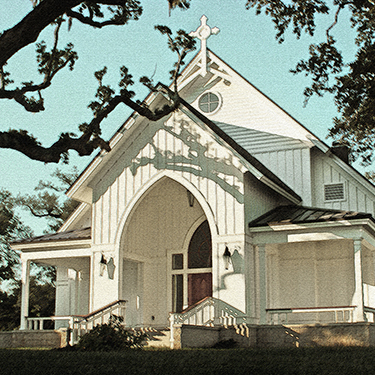 Another award-winning building within the Historic District, is Christ Episcopal Church Another award-winning building within the Historic District, is Christ Episcopal Church
Staffers at Mississippi Archives and History were invited to review the website and offer suggestions as it was being created over the past year.
Barry White, who works in MDAH’s Historic Preservation Division, believes the website can be used as a template for other Historic Districts across the state. White says, "Working primarily with local governments across the State, I often encounter communities that face challenges building public awareness about preservation efforts in their area. The new Bay St. Louis Historic Preservation Commission website is an excellent resource for the public, as well as elected officials, to explain and promote historic preservation and its benefits." Local commission members agree that the web page likely to be the most popular is “Success Stories.” Website visitors will find stories and photo essays of renovated historic houses within the district , alongside new buildings that mesh with the district’s character. The page also has a photo gallery of past Historic Preservation Awards winners. Fitzpatrick believes that the website can be a tool for savvy realtors and economic development agencies like the Hancock Port and Harbor Commission and the Hancock Chamber, which are working to bring new residents and businesses to the area. “The charm of Old Town Bay St. Louis is an exceptional economic and cultural resource,” Fitzpatrick says. “Our commission volunteers want to preserve and enhance that community character for future generations. The website will help us do just that.” To see the new Historic Preservation Commission website, go to: www.HistoricBSL.com The Beach Boulevard Experience Continues |
| Getting up early when you’re going to work is one thing. Rising before dawn when you’re heading out on an expedition is another experience completely. Kid energy surged through me on this April morning as I raced the sun's rising to leave. Thankfully, my sensible adult part – although not fully awake - somehow remembered to double-check the items I’d be taking along: Camera, extra battery, hat, wading boots and a fully charged I-phone. I dressed in long, light nylon pants with lots of pockets and a light cotton long sleeve shirt I borrowed from my husband’s closet. | Beach to Bayou |

She also gifted me with a nifty fluorescent orange vest. While it wasn’t hunting season, we didn’t want to be mistaken for wild boars by anyone else we might come across while trekking through the Hancock County wetlands. The two of us would be stalking birds, armed with cameras rather than guns. As another safety precaution, we'd also told our husbands where we were going, so in case we went missing for a few days, they might come and look for us.
We were headed to Napoleon (or Napoleonville, as it’s called on the Mississippi Gulf Coast Birding Trail map), the site of a centuries-old historic community on the east bank of the Pearl River. Its residents were resettled when Stennis Space Center was constructed in the 1960s, so now it’s officially “extinct.”
But 14,000 years or so before this place was named after a French emperor, Native American civilizations made this magical land their home, hunting camels and tigers and mastadons. Later cultures built earthworks and mounds that have survived thousands of years.
The incredible pine forests that sheltered eons of animals and humans – ones that must have rivaled the west coast redwoods - did not survive. They were completely razed by short-sighted lumber barons in the late 1800’s and early 1900’s.
“Completely” is not hyperbole in this case. To my knowledge, there’s not a stand of them remaining on the entire Mississippi coast (e-mail me if you know of one!). Yet the landscape near the Pearl still oozes with a primordial atmosphere. One wouldn’t be awfully surprised if a bison came lumbering through the underbrush.
Good thing. While we didn’t succeed in getting any spectacular photos of birds, we both reveled in having a good excuse to go tromping around in the woods, immersing ourselves in the natural world and for that morning at least, becoming just two more creatures in a forest swarming with life. The stress of our everyday lives melted away. We found ourselves in a different world, one where deadlines and obligations became meaningless.
Here’s a quick run-down on what to expect at Napoleon if you’d like to take your own birding expedition.
Head north on Hwy 607, past the 1-10 Exit 2 interchange, toward the Stennis Space Center complex gate. You’ll see a brown sign pointing to the Napoleon turnoff, turn left there. Eventually, you’ll come to sign pointing to another turn-off to your right, onto a gravel/dirt road. The times I’ve been out there, the road has been in pretty good condition, so most cars ought to be able to handle it with ease.
| Once you’re on the shell road, the first offshoot to the right leads to the old Napoleon Cemetery, a picturesque spot with oaks, Spanish moss and worn tombstones – and some new ones too. The morning we explored, the fog was just beginning to lift, but the combination of mist and a historic cemetery tempted us both. Chris and I slipped through the graveyard, a sense of reverence shrouding us both when we walked through the gate. Miles from any other human, we still spoke in whispers, absorbing the mystical atmosphere. The cemetery road is just a short stub, so we followed it back out and turned toward the Pearl River boat launch. We passed several small ponds marked with bird signage. They’re evidently related to abandoned gravel pits hidden by the woods. There’s a well-maintained fishing pier on the banks of the Pearl and a boat launch that’s popular with local fishermen. After exploring the area and taking several photographs, we left the car in the shelled lot and headed back up the road. Just a stone’s throw away, between the river and the ponds, is one of the most picture perfect swamps we’d ever seen. It hummed with sound and drew us back irresistibly. |
Our bird-photography score for the day may have been exceedingly low, yet we were finally rewarded with the sight of a prothonotary warbler. Although I recognized it from photographs, it was the first live one I’d ever seen. At once, I understand the thrill of bird-watching. Before this trip, I would have rated the excitement of the hobby as being slightly above the level of glacier racing. The yellow bird flited from limb to limb before us and refused to pose for our cameras, but that didn't dampen our joy.
The things that did model for our cameras were the showy jungle-like flora of the area. Chris ended up snagging the Awesome Shot of the Day, capturing the image of a bee gathering nectar from a splendid white bloom. I couldn't identify either the plant nor the insect. It didn't seem to matter.
Our morning ended when I was impaled in the thumb by a rusty fishhook while pushing myself up from a pond bank. Yet, even the possibility of tetanus had me dragging my heels, reluctant for our adventure to end. We added one item to carry in the car for future expeditions: a first aid kit.
Leaving near noon, we were still besotted by the swamp experience. On the way home, we detoured and checked out the trail-head of the Possum Walk Heritage Trail in Logtown and the Ansley birding site, scouting them out for future expeditions – and for future editions of the Cleaver.
Read the first article in this series about the Mississippi Coastal Birding Trail in Hancock County.
Tips for beginning bird-watchers
Peterman’s Delicatessen on Coleman Avenue in Waveland! Anyone remember it? I do. Such fond remembrance of food eaten! Pearl Peterman’s cooking and Fred Peterman’s boiled seafood.
Pearl’s plate lunches were a staple in my life from the mid ‘90’s till, you know, 2005. Monday was, of course, Red Beans ‘n Rice, salad, and corn bread. Tuesday was Salisbury steak, mashed potatoes and gravy, green peas, French bread. Wednesday was smothered cabbage, pork chops, string bean, and cornbread. Thursday was spaghetti and meatballs, French bread and salad. Friday was your choice: fried catfish or stuffed crabs, potato salad, and cornbread. Those plate lunches, at about 5 to 7 bucks a plate, over the years from ’95 into the 2000’s, were scrumptious. They were seasoned to perfection to suit my New Orleans cuisine taste buds groomed by Mama’s cooking, from scratch, of course—the only way to cook in those days. No take out, no frozen short cuts; no premade roux in jars!
So Pearl’s cooking in 1995 was a return to paradise for me. I’d lived in New York for 25 years. My tastes were refined by the famous New York watering holes of the time: Sardi’s, Twenty-one, The Russian Tea Room, The Oyster Bar at Grand Central Station, Tea at the Plaza, and the Waldorf Astoria’s pea soup. Not to mention myriad ethnic restaurants. So Pearl’s cooking definitely helped me contradict Tom Wolfe’s novel, You Can’t Go Home Again. Maybe you can’t go home in North Carolina, but in New Orleans and the Gulf Coast, you definitely can go home again: because our Mama’s know how to cook!
How did I find Peterman’s? On my return to Bay St. Louis after 25 years away, a local friend gave me an orientation tour. She stopped in front of Peterman’s, which I learned had opened in 1970 the year I moved to New York. “Now you can eat anything that comes out of the kitchen in that little place. That woman is a marvelous cook.” I looked at the building. There were three businesses: a liquor store; the deli, which was really like a localized Quick Stop grocery store with four plastic tables with seating set up between the grocery shelves; and a Laundromat. Each business had its own separate entrance. All owned by Pearl and her husband Fred. Over the years their children worked in the family business: Donna, Jan, Lil Fred, Melanie, Dana and Stephen. Then the grandchildren worked: Mandy, Brennan, and Kace. Miss Bonny, a wonderful Waveland local, cranked out the biscuits on Saturday and Sunday mornings. One of those biscuits with your café au lait was all you ever needed for breakfast.
Well, some slightly snobbish people who shall remain nameless, chided me, “You actually eat there?” My reply was , “ As often as I can.” Eventually, the snobbish folks got their deserved comeuppance.
One Friday, I was seated, enjoying my stuffed crab plate lunch, when a gentleman came in decked out in camo, fresh from duck hunting and Pearl said, “Justin, sit down there with my friend Liz.” Justin sat and looked at my plate with a stuffed-crab- envy- look in his eye. He ordered his own stuffed crab.
“Every Friday on my way to work, I stop here to eat Pearl’s stuffed crab,” Justin said.
“Really, “ I said. “Where do you work?”
“Galatoire’s,” Justin said. And he reached in a pocket and gave me his card.
It said Justin Galatoire Frey. "My mother was a Galatoire," Justin explained.
Well, you know the ending of the story. Thanks to Katrina, Peterman’s is gone—slabbed. Not the least of our losses, not the greatest, except perhaps to Pearl and Fred. They live in the Kiln now. Their children and grandchildren are still around. Except for Stephen, he’s in Detroit playing very well for the Lions. Fred is still wondering where his boiling pot is. Oh, I haven’t mentioned how delicious his boiled shrimp, crawfish, and crabs were.
You see Fred had a pot that he could cook 600 pounds of shrimp in at one boil! Or 600 pounds of crawfish in one boil. Or 14 hampers of blue claw crabs in one boil. Is it rolling around on the bottom of the Gulf? Has it become part of the oyster reef? It was never found on land. Did looters come and grab it? If you go to a crawfish boil and see it, please let Fred know. He’d still love to find it.
Fred’s pot is a separate story in itself. If you’d like to read the story of Fred’s boiling pot, let us know at the Cleaver. The story of Fred’s Boiling Pot might be in the next issue.
The Mississippi Blues Trail
Along the Coast, Part 2
- This month - Complete our virtual tour of the Mississippi Blues Trail along the coast, stopping in the Pass, Gulfport and Biloxi!
|
Read Part One of this series by clicking here.
Part 2 Pass Christian Blues and jazz music also has an illustrious history at our neighboring town across the Bridge, Pass Christian. The Pass’s most famous “native son” was alto saxophonist Captain John Handy. (The “Captain” moniker reportedly was earned from Handy’s authoritative band leadership style.) With the Louisiana Shakers, Handy and his brother toured throughout the region. In the later part of his life, Handy recorded several albums and played often at Preservation Hall in New Orleans, in addition to touring worldwide. |
Shared History
|
Among the local Pass clubs that featured blues, jazz, and R&B were the Dixie, the Savoy, and the P. C. Club. In 2011, a Blues Trail marker was dedicated along Highway 90 to commemorate Blues and Jazz in the Pass.
Every May from 1999 to 2005, the Pass had celebrated its rich African American musical heritage with its "Jazz in the Pass" festival. Temporarily discontinued for several years after Hurricane Katrina, “Jazz in the Pass” has been back in business since 2011!
Gulfport – especially the North Gulfport area - once supported vibrant blues/R&B venues. In fact, New Orleans jazz legend Jelly Roll Morton used to play played the Great Southern Hotel in the 1900s. Gulfport was also an occasional stop for rambling bluesmen and women such as Robert Johnson and Ma Rainey, the famous “mother of the blues.”
Gulfport has been fertile territory for musicians who not only turned the Coast into a hotbed of blues and R&B, but also impacted popular music on an international scale. Allman Brothers Band members Johnnie Lee Johnson (better known as Jaimoe) and Lamar Williams both were raised in Gulfport and performed in many clubs along the Coast during their early years. Other Gulfport residents included pianist Roosevelt Sykes, guitarist Blind Roosevelt Graves, pianist Cozy Corley, and singer Albennie Jones.
In those days, the scene at the Hi-Hat Club and other North Gulfport blues hotspots like Ebony and Night Owl, was known to be on the wild side, as the clubs then all were outside Gulfport police jurisdiction.
Gulfport was also an important location for disseminating the blues to the rest of the world by radio. After World War II, the African-American community across the country relied on radio for entertainment and news, and Gulfport radio was taking the lead in “Broadcasting the Blues.” In 1994, blues promoter “Rip” Daniels launched WJZD radio in Gulfport, making it the first African American-owned FM station on the Mississippi Gulf Coast. In 2000, Daniels took the blues concept further using satellite and Internet technology to launch the American Blues Network (ABN) to listeners around the world. In 2007, the Blues Foundation dedicated a “Broadcasting the Blues/ABN” Blues Trail marker in Gulfport.
The “Four Corners” intersection in north Gulfport, at the intersection of Arkansas Avenue and Martin Luther King Jr. Blvd., was a central blues location in the decades when the African American communities in and around north Gulfport supported many nightclubs that operated outside the old city limits. Now, it is the site of the most recent Mississippi Blues Trail marker to be dedicated on the Coast, installed in January of this year.
In Biloxi, the stretch of Main Street that catered to the African American trade in the years during and after World War II has been designated as “Biloxi Blues.” Biloxi’s musical culture was particularly influenced by that of New Orleans. (Indeed, New Orleans jazz pioneer Jelly Roll Morton lived in Biloxi in the early 1900s). During the war years and after, airmen from Keesler Field often participated both as audience members and musicians. Local blues musicians from Biloxi included Cozy Corley, and Carl Gates and the Decks. A Blues Trail marker was dedicated in 2010 in Biloxi at the intersection of Main and Murray Streets.
Other notable sites along the Mississippi Blues Trail that are only a short drive from the Gulf Coast include Hattiesburg, which rock historians have credited as being one of the birthplaces of rock and roll music, and which is home to a number of important historic blues venues, and Laurel in Jones County, home of Blind Roosevelt Graves, and the Laurel Mother's Day Blues Festival every May since 1987.
In Hattiesburg, the original Hi-Hat Club was built in the 1950s and was an important stop on the “chitlin circuit” for famed African American blues and soul performers such as B. B. King, James Brown, Otis Redding, Ike & Tina Turner, Sam Cooke, Al Green, Ray Charles, Louis Armstrong, Louis Jourdan, Guitar Slim, Bobby “Blue” Bland, and many others. One of the largest clubs in Mississippi, the Hi-Hat sometimes drew crowds of over one thousand reveling blues lovers.
In addition, Mobile Street in Hattiesburg was a historic African American business and entertainment district where many of the blues musicians lived and worked, and the center for several blues and gospel record labels. One studio on Mobile Street was the site of a 1936 historic series of recording sessions by Mississippi blues, gospel, and country performers, including the Mississippi Jook Band and the Edgewater Crows.
In Europe Too?
Interestingly, the Mississippi Blues Foundation has arranged for a few Blues Trail markers not only outside of the state of Mississippi (particularly in Alabama and Louisiana), but also for two markers to have been placed in Europe! One is in Cahors, France, where Blues first reached France in the 1920a and 30s via touring African American groups, and the other is in Notodden, Norway, sister-city to Clarksdale, Mississippi, and site of a hugely popular blues festival that draws top Mississippi-born blues artists. Mississippi blues really gets around!
Whether you're a die-hard blues fan or a casual traveler, keeping an eye out for these Blues Trail markers is guaranteed to teach you new things about the music and its inspirational founders, and to lend a new appreciation for the spots that gave birth to the blues.
To donate to the Mississippi Blues Foundation, or for information on how to purchase a Mississippi Blues Trail license plate, see www.msbluestrail.org. Your money will assist the Benevolent Fund, which helps Mississippi blues artists in times of need, and will help communities pay for and maintain the Blues Trail Markers.
The Beach Boulevard Experience
Part 1 - North of the Tracks
Historian and well-known coast musician Pat Murphy has been working on his memoir "Growing Up Downtown" for several years. During 2015, the Cleaver is featuring one of his essays each month - along with historical photographs from his archives.
|
The Second Saturday Art Walk celebration on April 11, the year’s first in the springtime, is perfect for taking advantage of the season.
Merchants will have their doors wide open as usual, ready to welcome people strolling the streets of Old Town, enjoying the seasonal weather and the live music while being part of the festivities. Both of April’s Second Saturday Hot Spots - Carroll House Bed & Breakfast and the Hancock County Historical Society home - are known far and wide for their warm hospitality as well as their charming history. Carroll House B & B
|
the Second Saturday column is sponsored by
Antique Maison Ulman Tearoom - 317 Ulman Ave. Open 4pm - 8pm on Second Saturdays, serving complementary samples of lunch room menu, deck dining now open. Come shop and experience the best of Bay St. Louis.
Bay Emporium - 112 S. Second Street - Thirteen shops under one historic roof. Spring is in full bloom in the historic setting of Bay Emporium! Thirteen separate shops, filled with old and new treasures. BOESCH AND CO. features antique and newly crafted fine furniture IN 2 DETAILS coordinating fashion and home décor, FLAIR offers a new crop of fun and funky gifts, VOILA! Brings in new French inspired furniture and home décor, SHIP OAR SHORE outfits the nautically inspired with activewear and accessories, CHARBONNET ANTIQUES carries furniture and architectural salvage, BIJOUBEL continues their tradition of classic and trendy fashions and accessories, STEAMPUNK CURIOSITIES electrifies a gallery full of clever sculpture and time altering machinery, SCENTS ON SECOND STREET features the popular line of Swan Creek candles, melts, and pottery, and just in time for Prom Season ARMOIRE NOIR a blend of true vintage and new retro inspired romantic wearables. Spring is in full bloom in the historic setting of Bay Emporium! Thirteen separate shops, filled with old and new treasures. BOESCH AND CO. features antique and newly crafted fine furniture IN 2 DETAILS coordinating fashion and home décor, FLAIR offers a new crop of fun and funky gifts, VOILA! Brings in new French inspired furniture and home décor, SHIP OAR SHORE outfits the nautically inspired with activewear and accessories, CHARBONNET ANTIQUES carries furniture and architectural salvage, BIJOUBEL continues their tradition of classic and trendy fashions and accessories, STEAMPUNK CURIOSITIES electrifies a gallery full of clever sculpture and time altering machinery, SCENTS ON SECOND STREET features the popular line of Swan Creek candles, melts, and pottery, and just in time for Prom Season ARMOIRE NOIR a blend of true vintage and new retro inspired romantic wearables. Bay-Tique - 125 D Main St. 125 D Main St. - Offering "Bay-Wares for all seasons," unique, stylish apparel you won't find at the mall. Everything you need for Spring! Dresses, Sandals, Maxi's Swimwear. Women's Sanuk shoes 15% off. Plus our "Tent Sale" continues while inventory lasts. Everything in the "tent" is 50% off or more! The Bonner Collection - 108 S. Beach Blvd. Suite D. Visit the Bonner Collection to see our new Spring home decor, gifts, jewelry, art arriving almost daily. Would love to see you and enjoy some refreshments. Cheers! California Drawstrings - 216 Main Street - New spring Flax and linens have arrived! George’s Girls - 108 S. Beach Blvd. Ste B, (inside the French Settlement building). Purveyors of Fine Linens. George's Girls is a great place for beautifully scented candles and soaps. We have new Spring Yala, Spartina 449 and Gretchen Scott just in. And we are now carrying Dash and Albert rugs! Gallery 220 - 220 Main Street - Artist Joanna Slay offers a special workshop "Mosaics and Mirrors" Fashion Express - Down the long hall at Maggie May’s Art Gallery (126 Main Street), Swarovski crystal collections by Victoria Lynn and Victoria Cross in an array of stunning colors, complimentary gift wrap! The French Potager - 213 Main Street - Collectibles, art and florals. Lulu's Restaurant and Maggie May's Art Gallery-126 Main St - A destination in and of itself, 5300 square feet of dining and shopping. Look for Lulu's Restaurant expansion into dinner service and Sunday Jazz Brunch in mid-May Magnolia Antiques, 200 Main Street. If you haven't seen the totally rearranged shop, it's definitely worth a stop! We have completely turned it around. All the same great variety plus adding more everyday! Annie, the Doll Doctor, has moved her hospital and her best collectibles to our location! Dan's there too and a couple of new vendors in Magnolia Antiques at the corner of Second and Main! And of course, we'll offer snacks and bargains!! The Mockingbird Cafe - 110 South Second St. Lighten up and get your groove on at the Mockingbird on Second Saturday. Enjoy the Caribbean feel of the photos of Sylvia Langlinais. Catch an island breeze with Marian Knobbe's watercolors.Enjoy JJ Foley's "lit from within" paintings. Kat Fitzpatrick, Thomas Jackson and Marsha Prejean will be showing new and colorful work. The musical offering will be singer/songwriter Jeff Thompson who comes to us by way of Asheville, New Orleans and the Gulf Coast. Enjoy a sip of SoPro or Lazy Magnolia artisanal beers under the stars and join us in saying "Welcome, Spring! What took you so long?" Serious Bread Bakery - 131 Main Street, Suite D - Along with signature artisan breads, flatbreads and sweet things, you can also try pesto, hummus and our special tomato sandwiches. As always, we offer samples of our baked goods. Social Chair - 201 Main St. - Stop in to take a peek at our Emerald City and be sure to shop our new Fairy Garden section, brought to you by Marigny Northington. Take the time to enjoy the little things (and little people) in your life. We have a fairy that has moved into the tree by our front door. Join us as we celebrate all things Spring! Time After Time Antiques (Inside Bay Emporium), 112 S. Second St. Offering a unique array of antiques, furniture from different eras, collectibles, and home decor. Between the hours of 4PM and 8PM we offer 20% off furniture. Our selection changes monthly, so come see us. We also carry the pottery line of Swan Creek Candles. Twin Lights Creations - 136 Main Street - Eclectic garden & home décor. It’s March and on the coast that means wind, and sometimes a lot of it. Perfect timing for all new kinetic sculptures that are hand made of pure copper and can be outside year around. A slight breeze spins these designs, providing a mind entrancing, mesmerizing visual pattern, inducing a very relaxing, meditative state of mind! Several sizes and price points to choose from. Come, enjoy the elements of nature and take a little of the “Light” with you. The Ugly Pirate - 144 Demontluzin St. - Enjoy hand made Pizza with a cold craft beer. Live music every Saturday from 6 pm to 10 pm. Thursday night Trivia starts at 8 pm. We are family and pet friendly! Something is always happening at The Pirate so follow us on Facebook. |
Categories
All
15 Minutes
Across The Bridge
Aloha Diamondhead
Antiques
Architecture
Art
Arts Alive
Arts Locale
At Home In The Bay
Bay Bride
Bay Business
Bay Reads
Bay St. Louis
Beach To Bayou
Beach-to-bayou
Beautiful Things
Benefit
Big Buzz
Boats
Body+Mind+Spirit
Books
BSL Council Updates
BSL P&Z
Business
Business Buzz
Casting My Net
Civics
Coast Cuisine
Coast Lines Column
Day Tripping
Design
Diamondhead
DIY
Editors Notes
Education
Environment
Events
Fashion
Food
Friends Of The Animal Shelter
Good Neighbor
Grape Minds
Growing Up Downtown
Harbor Highlights
Health
History
Honor Roll
House And Garden
Legends And Legacies
Local Focal
Lodging
Mardi Gras
Mind+Body+Spirit
Mother Of Pearl
Murphy's Musical Notes
Music
Nature
Nature Notes
New Orleans
News
Noteworthy Women
Old Town Merchants
On The Shoofly
Parenting
Partner Spotlight
Pass Christian
Public Safety
Puppy-dog-tales
Rheta-grimsley-johnson
Science
Second Saturday
Shared History
Shared-history
Shelter-stars
Shoofly
Shore Thing Fishing Report
Sponsor Spotlight
Station-house-bsl
Talk Of The Town
The Eyes Have It
Tourism
Town Green
Town-green
Travel
Tying-the-knot
Video
Vintage-vignette
Vintage-vignette
Waveland
Weddings
Wellness
Window-shopping
Wines-and-dining
Archives
April 2024
March 2024
June 2023
March 2023
February 2023
January 2023
December 2022
November 2022
October 2022
September 2022
August 2022
July 2022
June 2022
May 2022
April 2022
March 2022
February 2022
January 2022
December 2021
November 2021
October 2021
September 2021
August 2021
July 2021
June 2021
May 2021
April 2021
March 2021
February 2021
January 2021
December 2020
November 2020
October 2020
September 2020
August 2020
July 2020
June 2020
May 2020
April 2020
March 2020
February 2020
January 2020
December 2019
November 2019
October 2019
September 2019
August 2019
July 2019
June 2019
May 2019
April 2019
March 2019
February 2019
January 2019
December 2018
November 2018
October 2018
September 2018
August 2018
July 2018
June 2018
May 2018
April 2018
March 2018
February 2018
January 2018
December 2017
November 2017
October 2017
September 2017
August 2017
July 2017
June 2017
May 2017
April 2017
March 2017
February 2017
January 2017
December 2016
November 2016
October 2016
September 2016
August 2016
July 2016
June 2016
May 2016
April 2016
March 2016
February 2016
January 2016
December 2015
November 2015
October 2015
September 2015
August 2015
July 2015
June 2015
May 2015
April 2015
March 2015
February 2015
January 2015
December 2014
November 2014
August 2014
January 2014
November 2013
August 2013
June 2013
March 2013
February 2013
December 2012
October 2012
September 2012
May 2012
March 2012
February 2012
December 2011
November 2011
October 2011
September 2011
August 2011
July 2011
June 2011

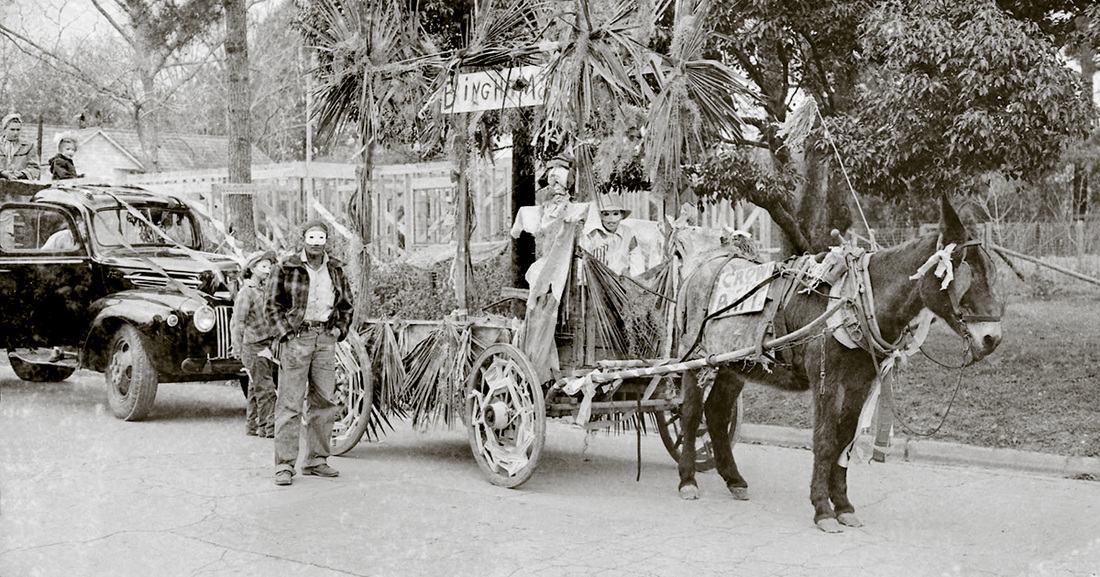
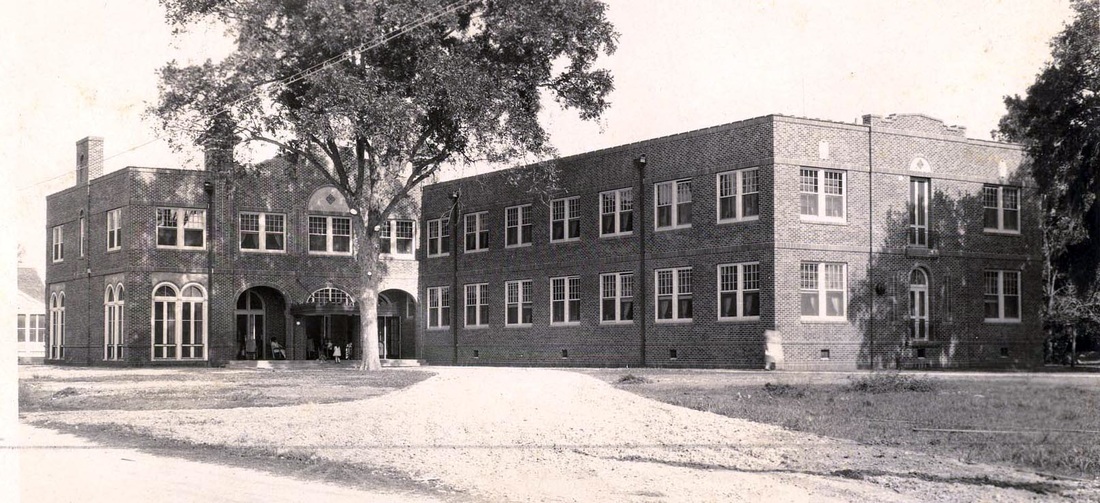
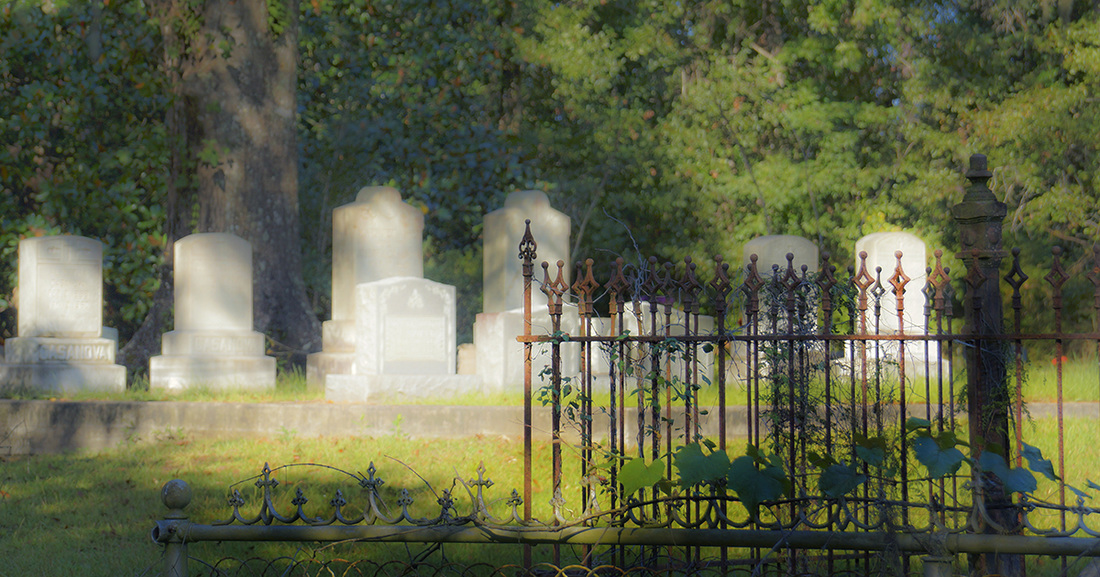

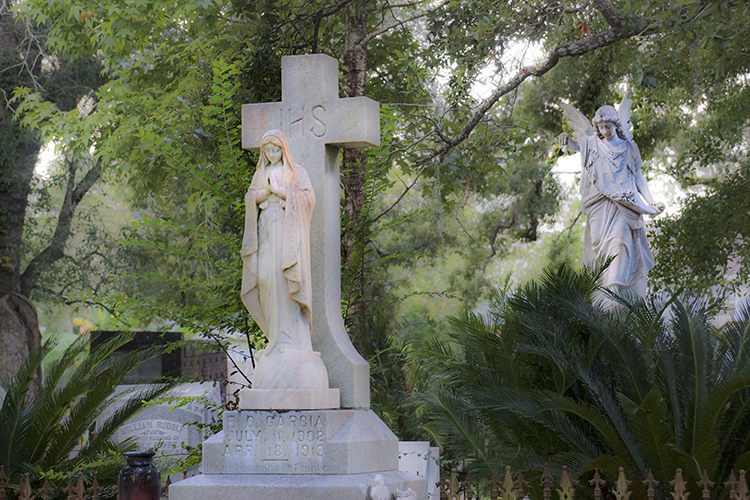
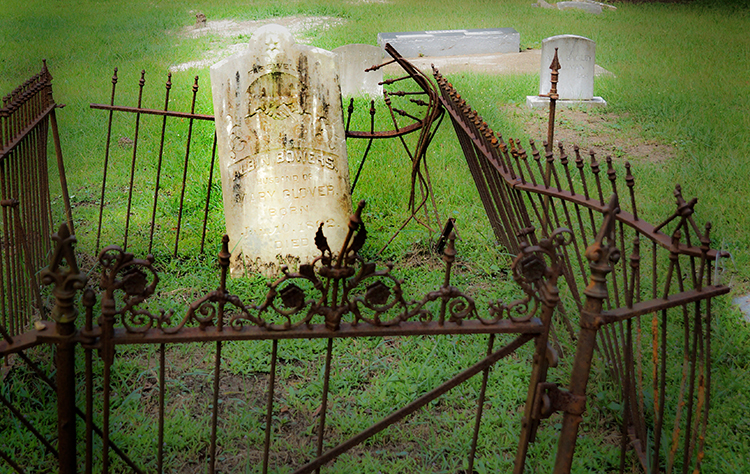
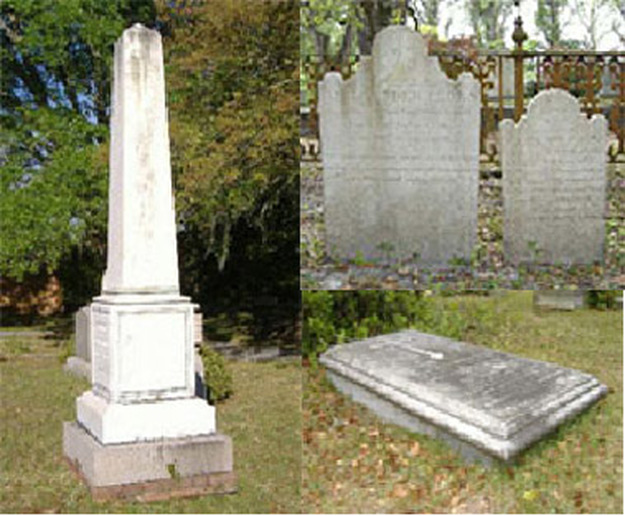
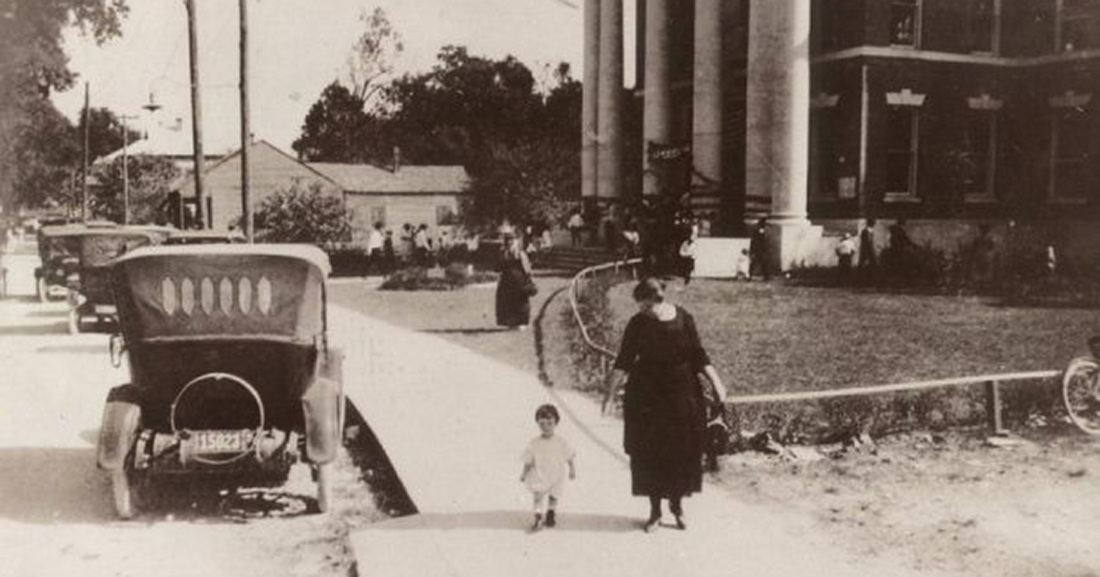
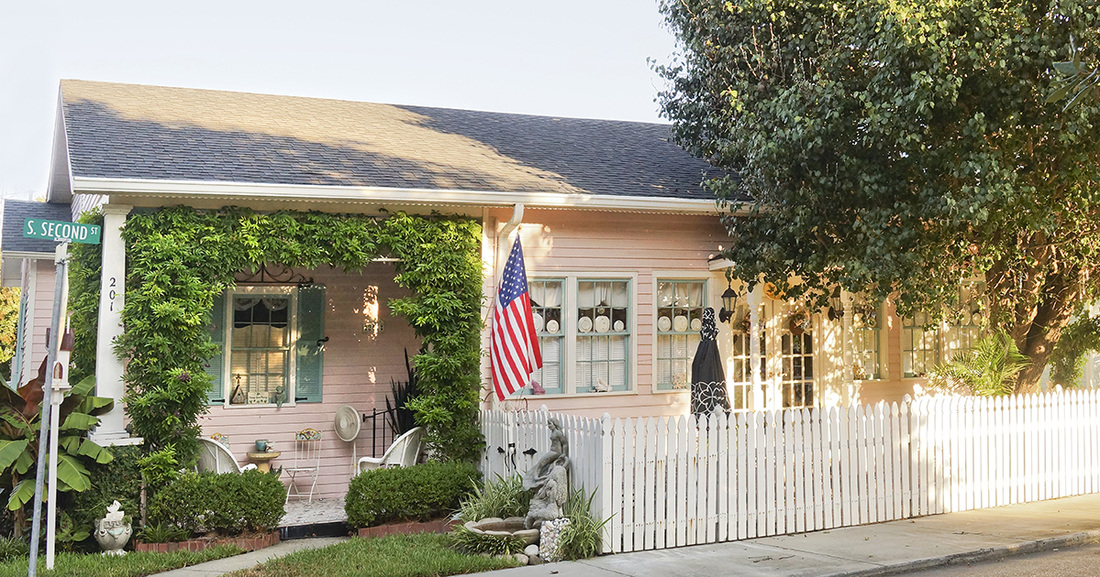

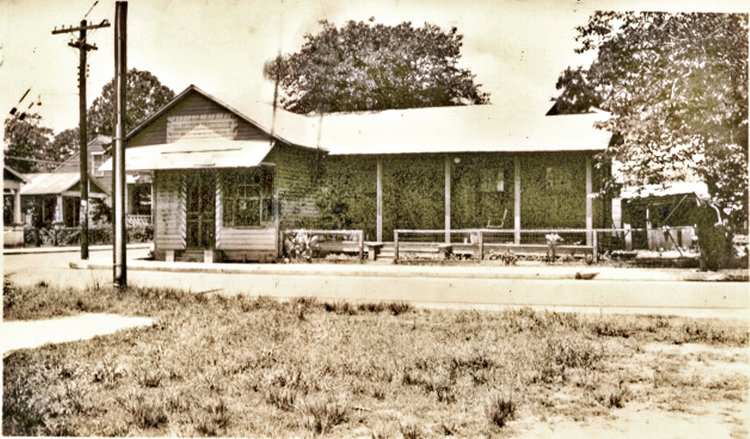

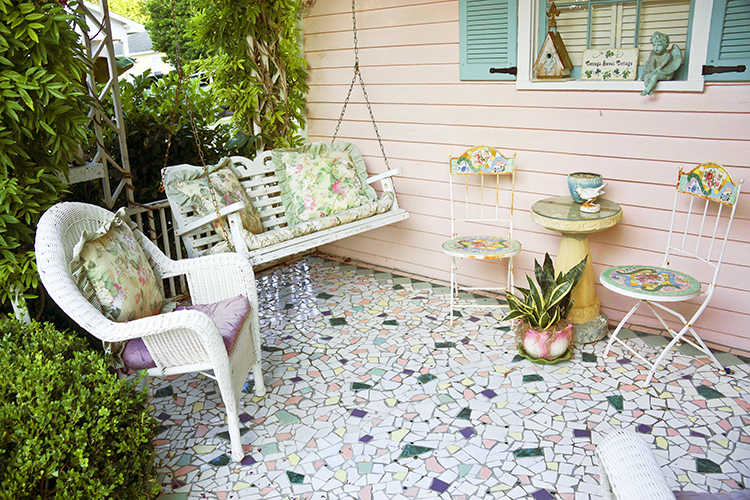
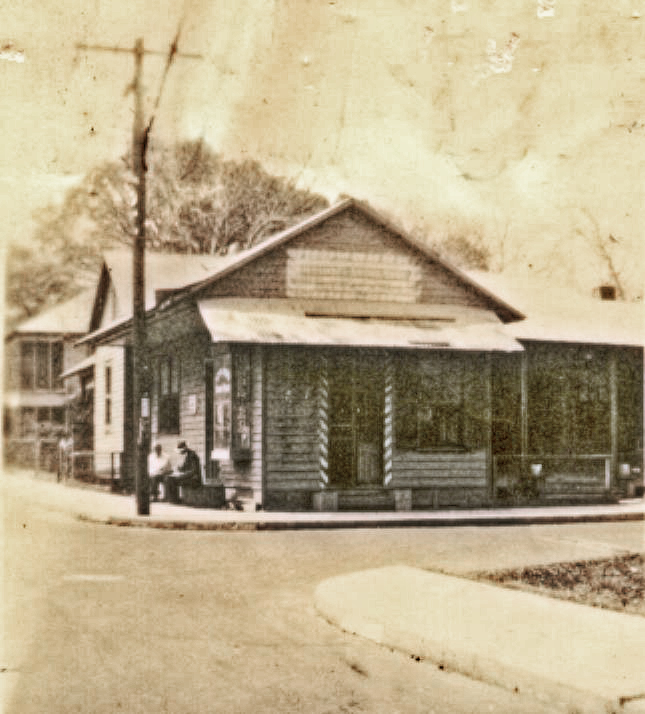

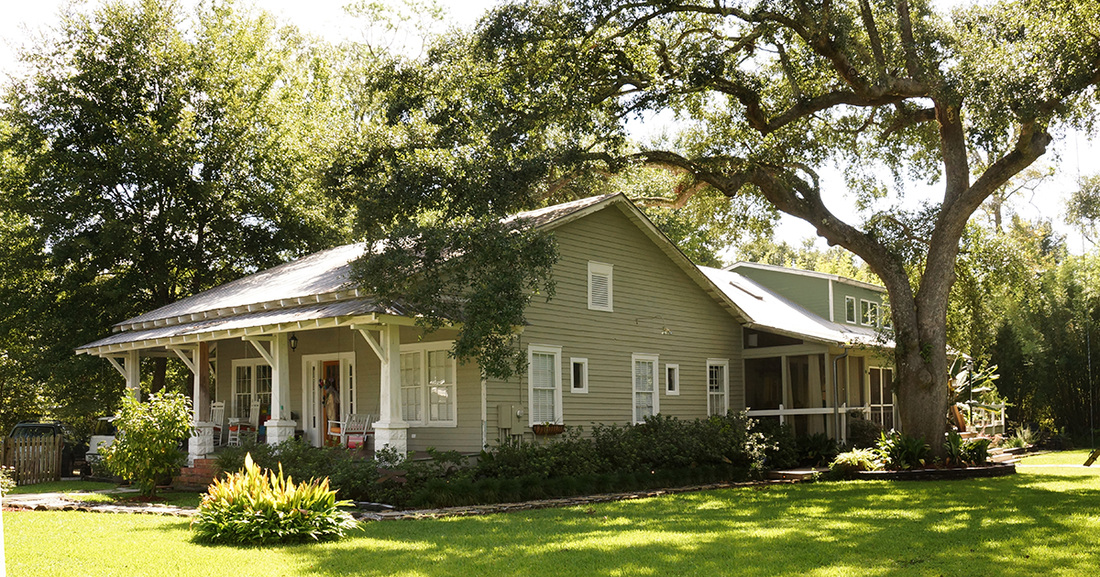

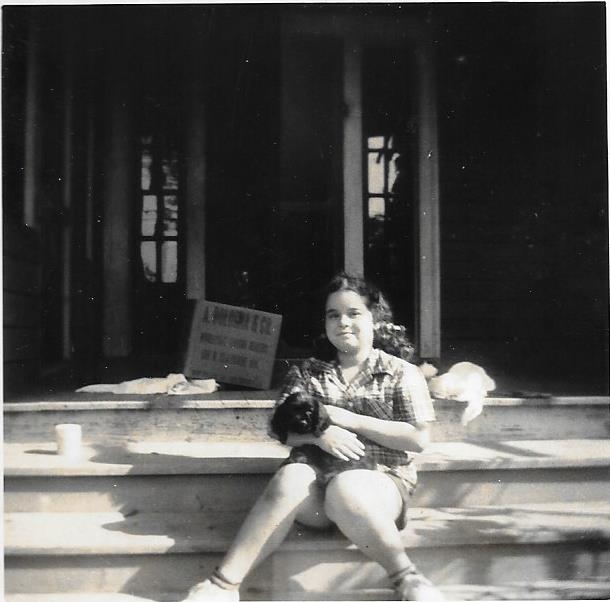
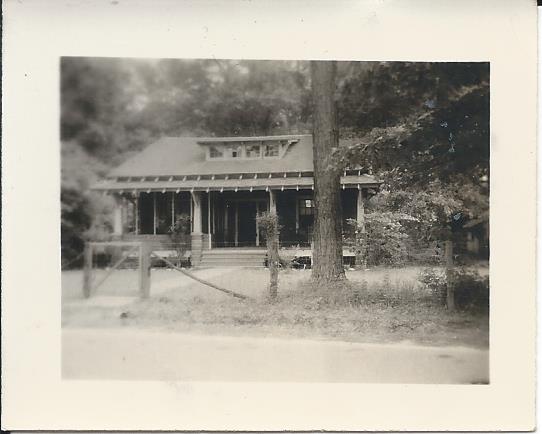
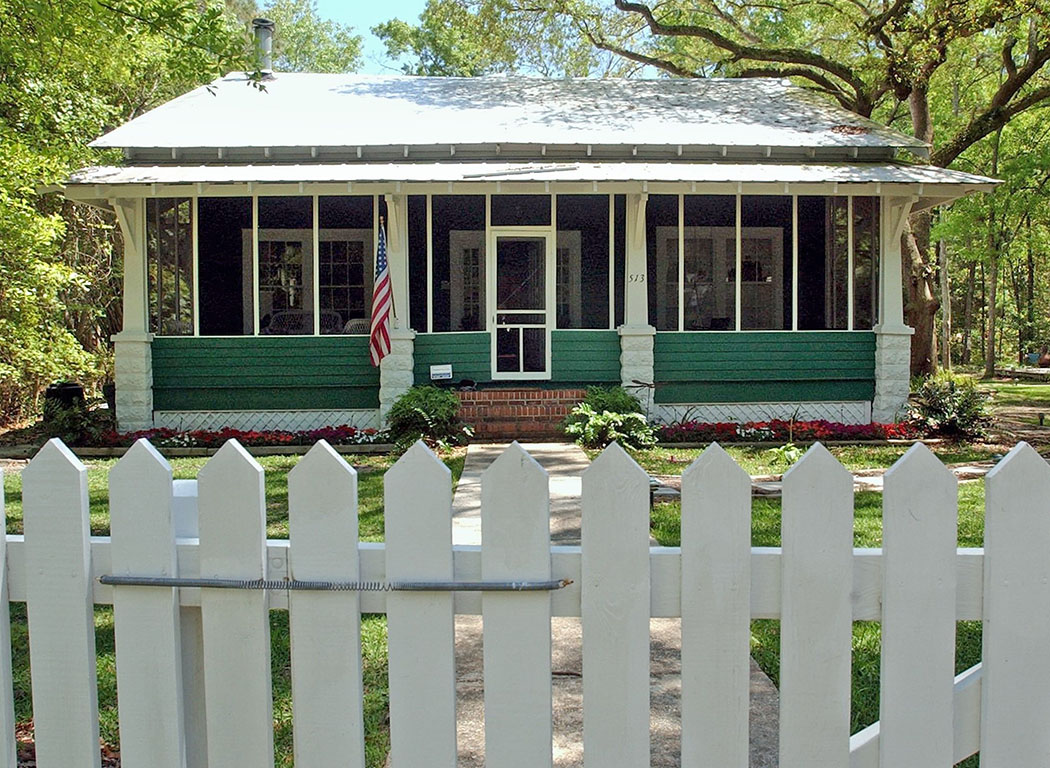
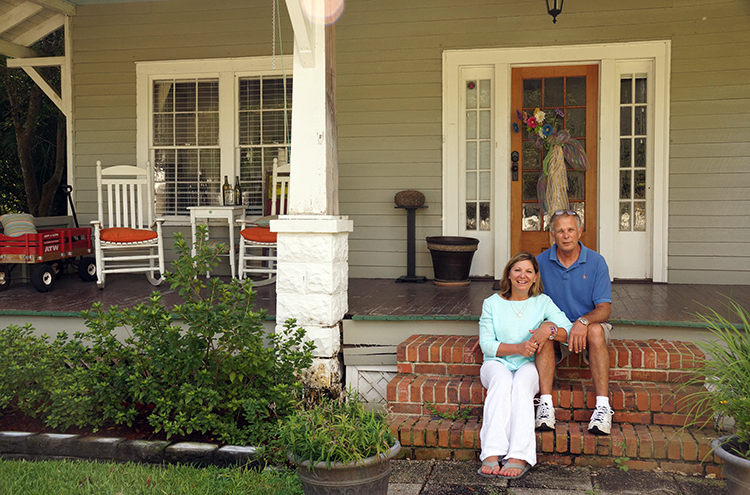
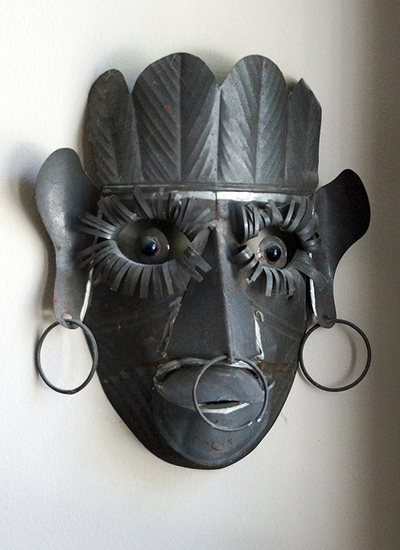
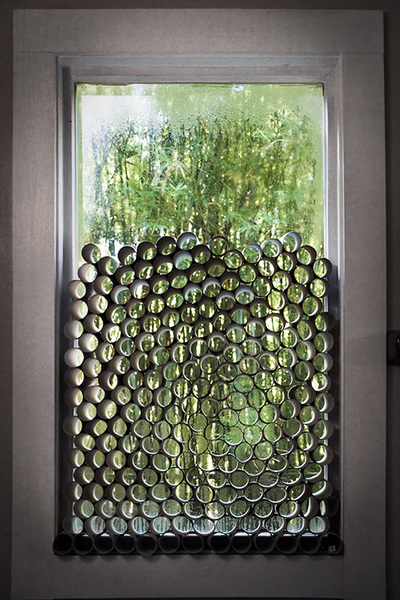
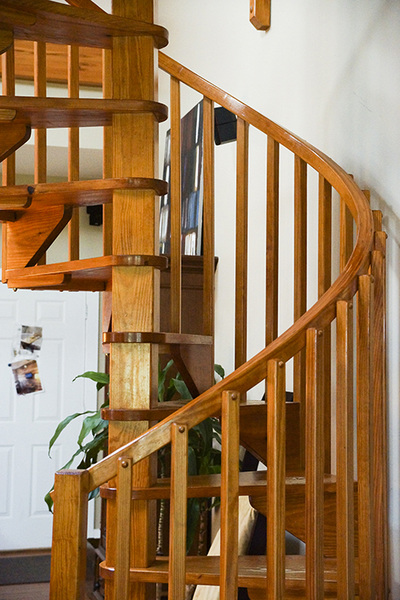
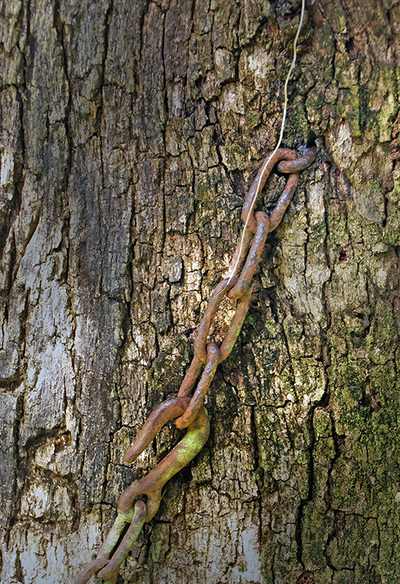
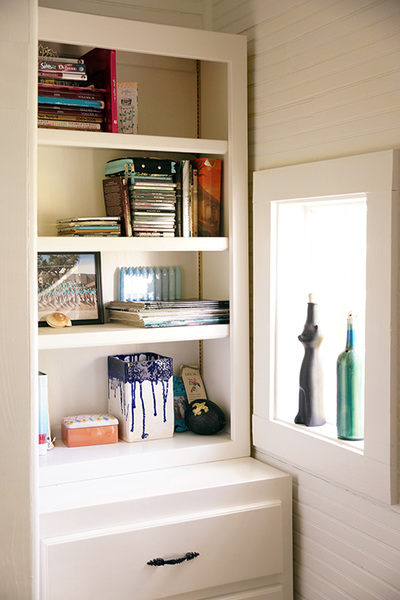
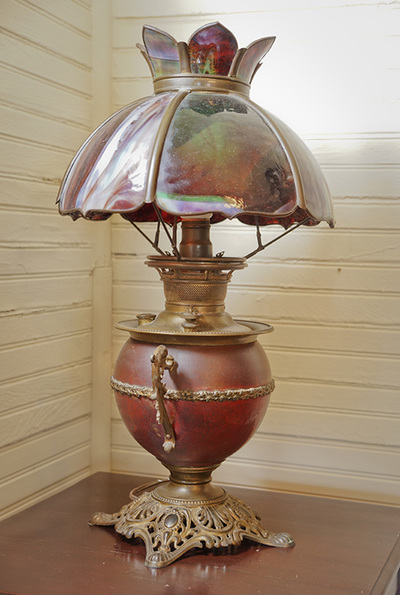

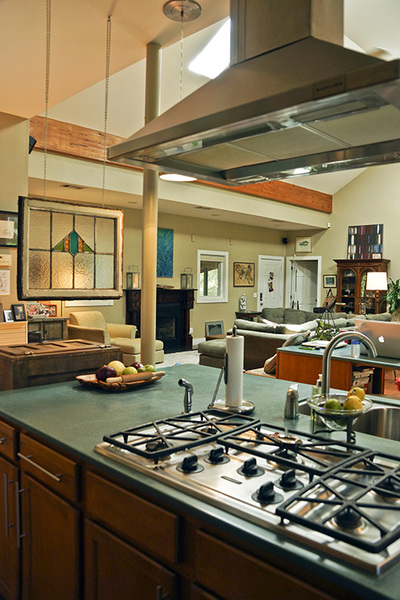



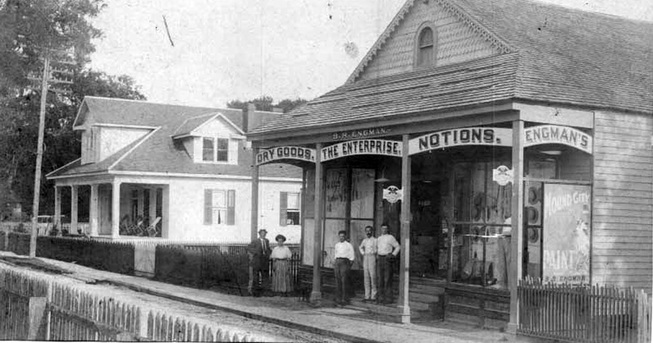
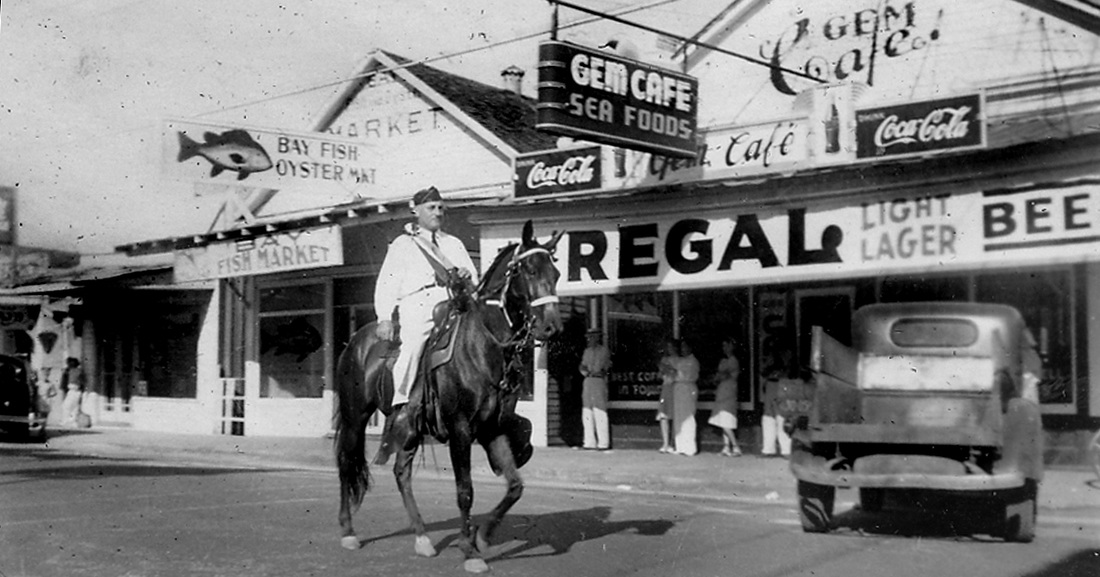
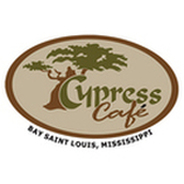
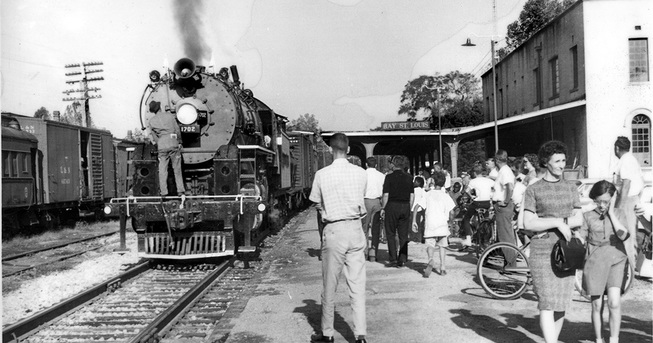

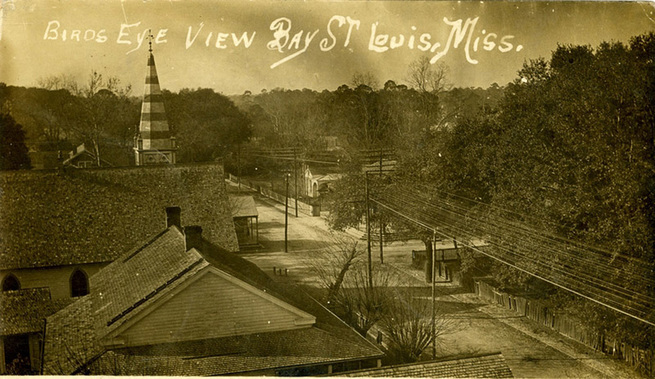
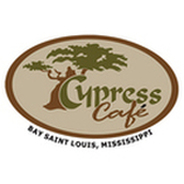
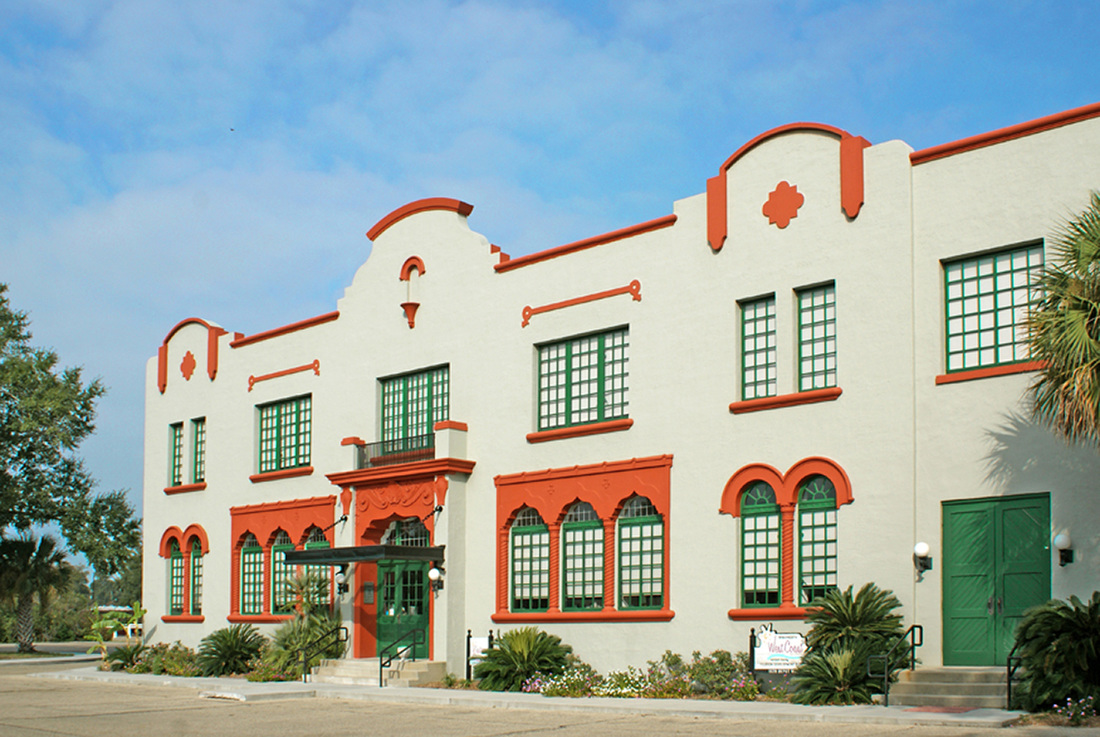

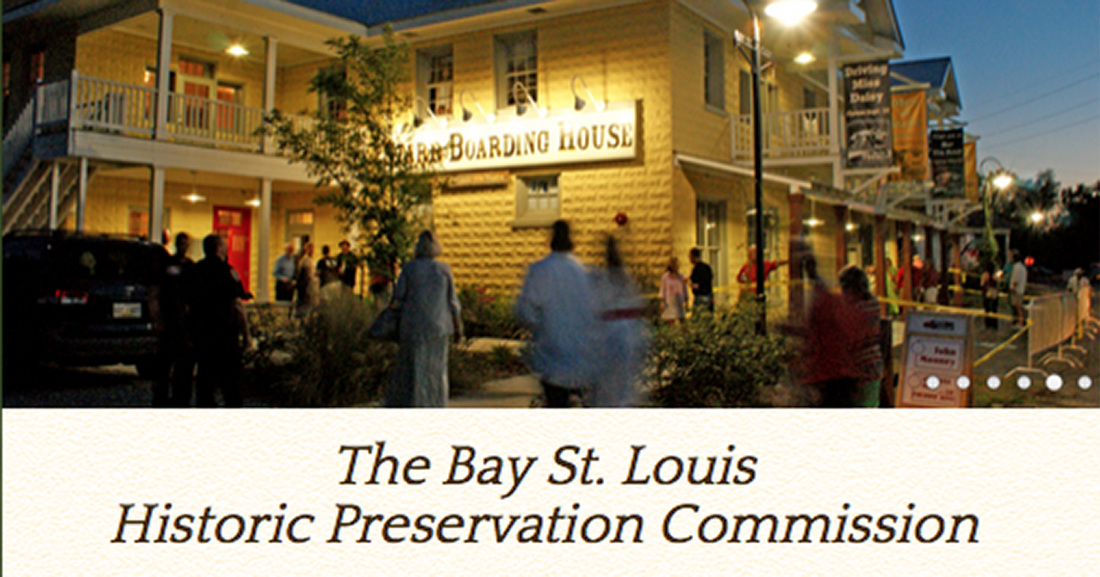

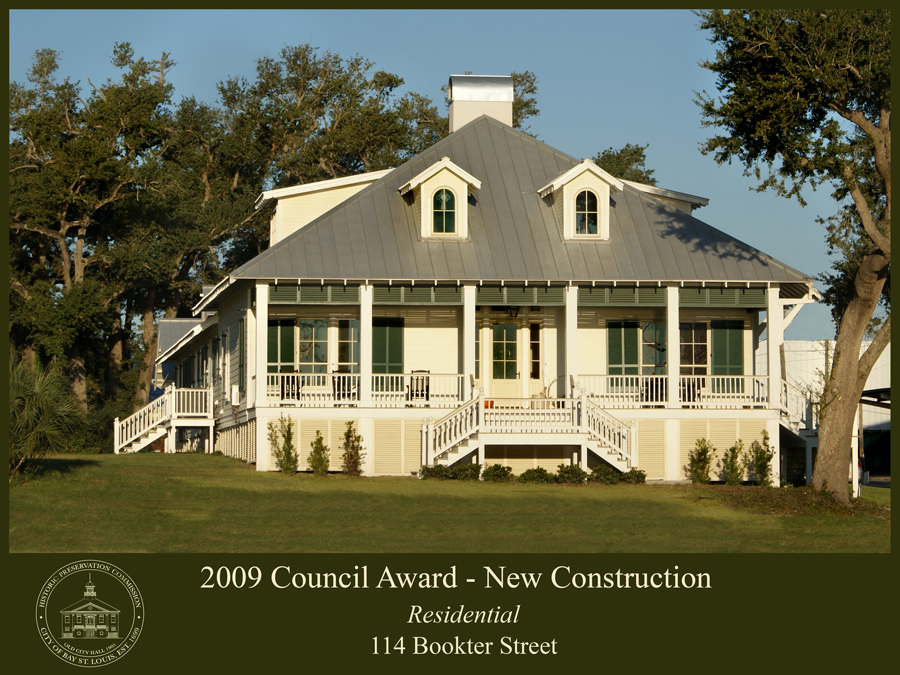

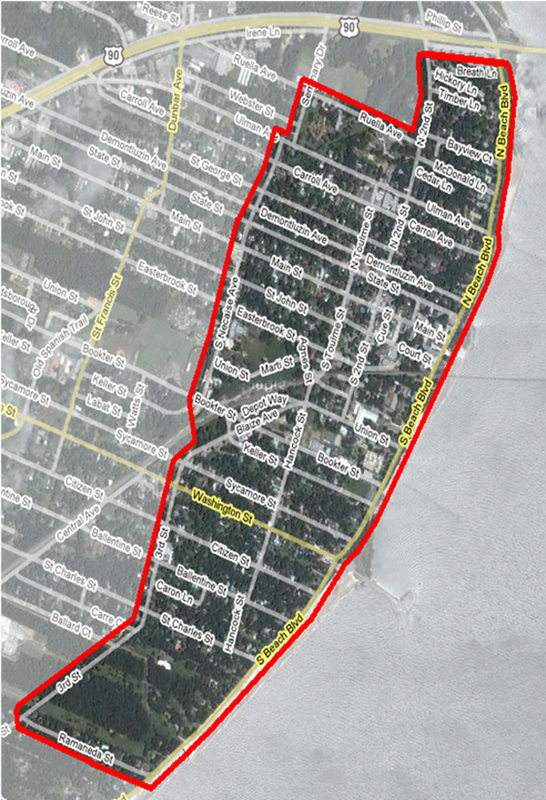
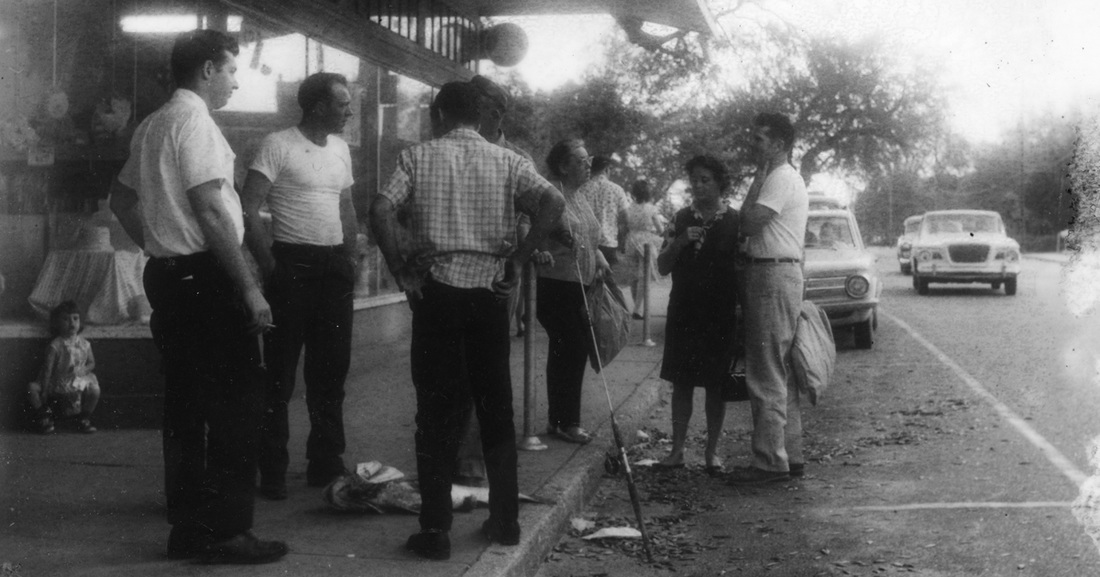


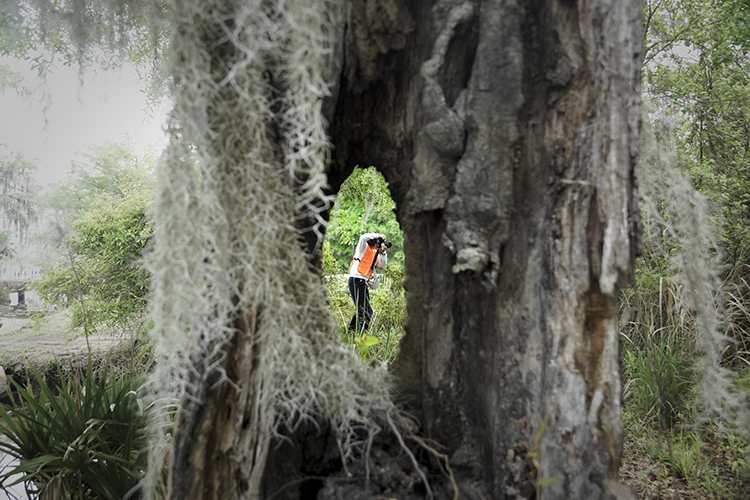
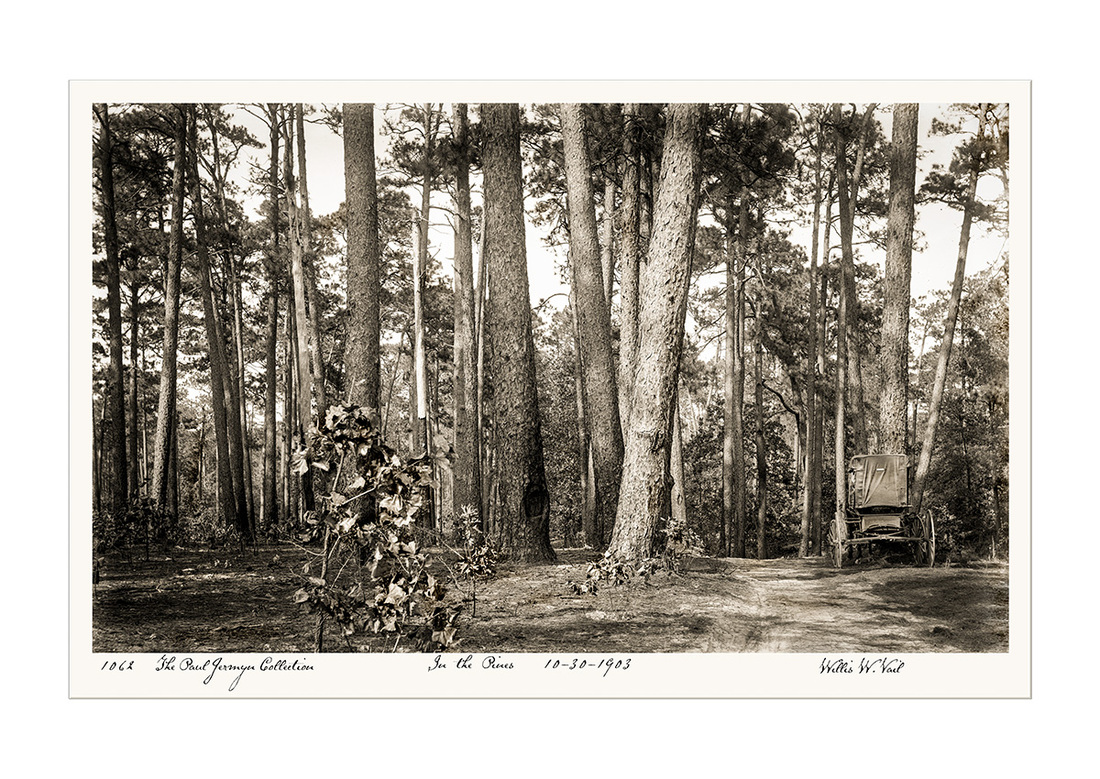
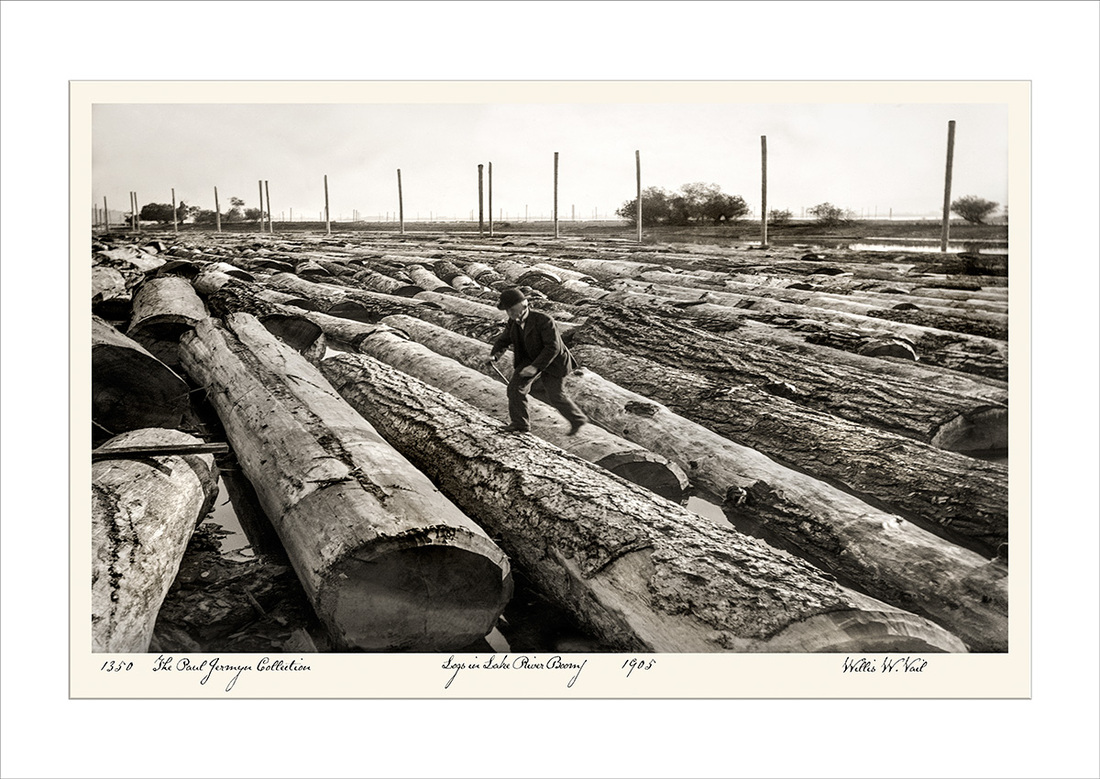
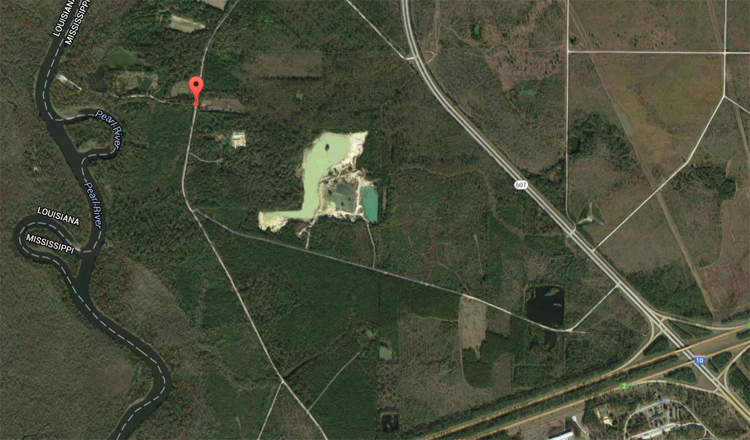
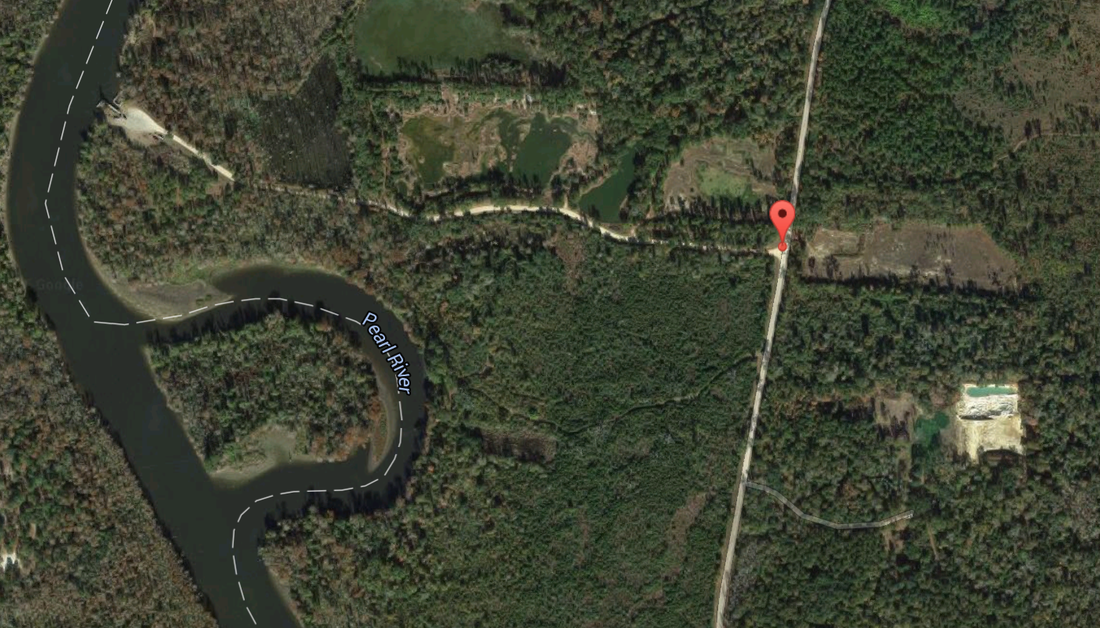
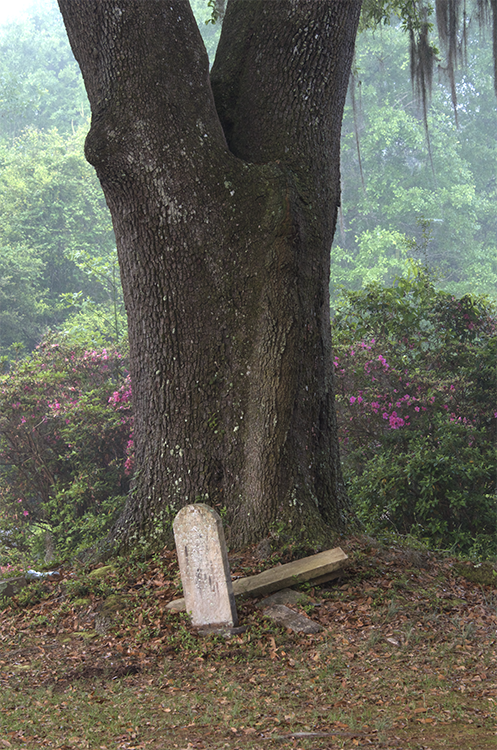
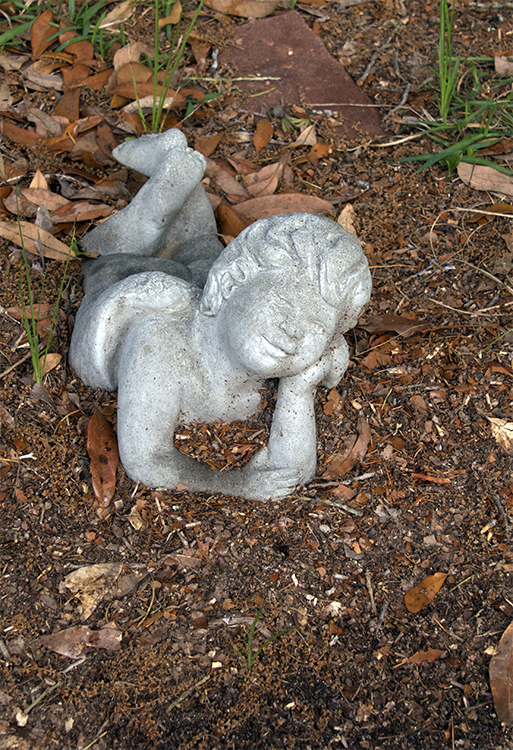
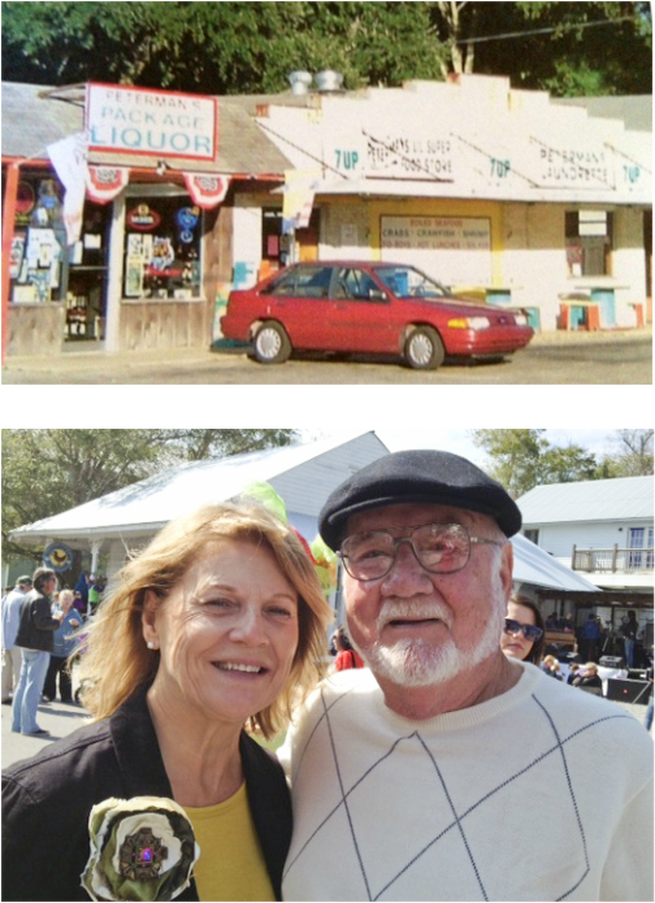
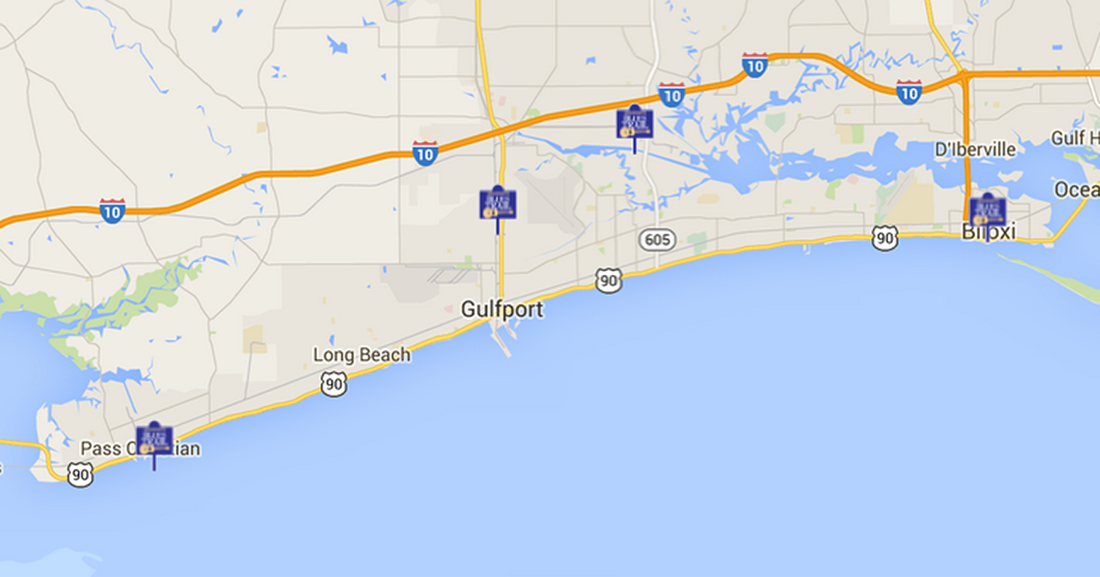

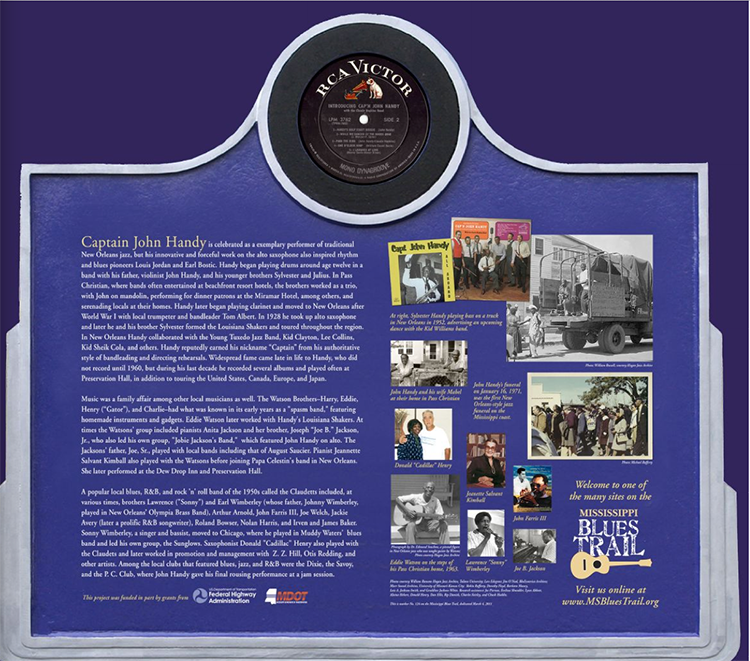
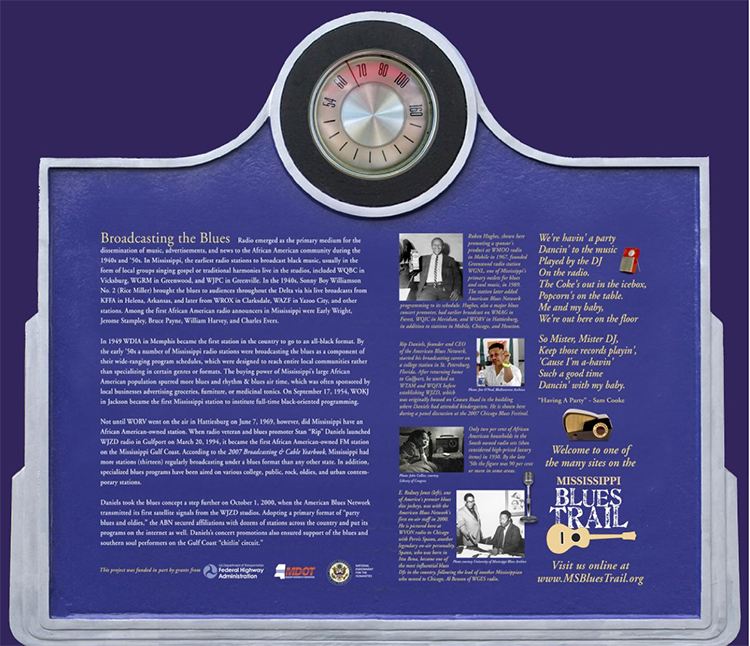
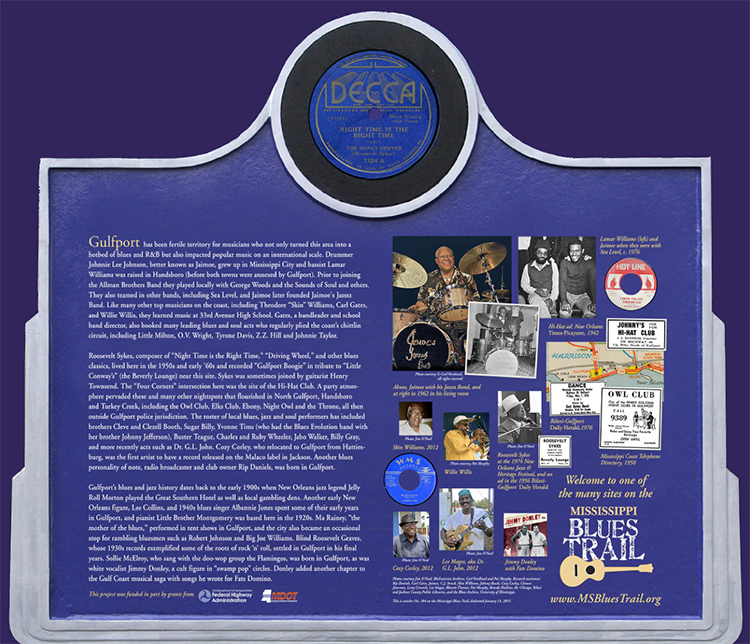
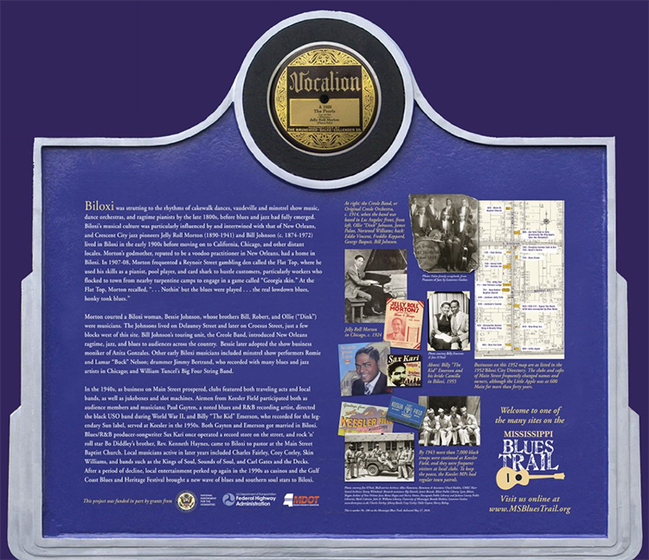
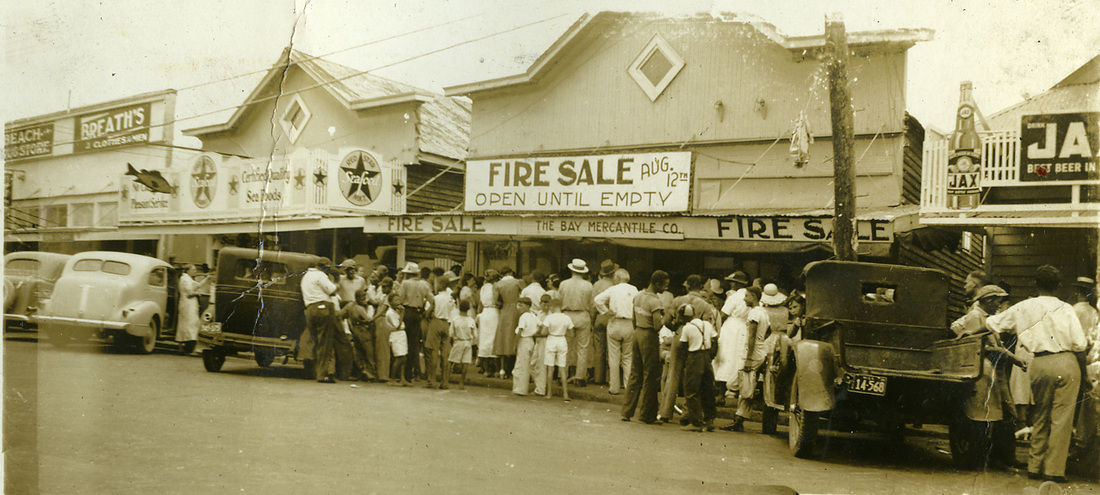
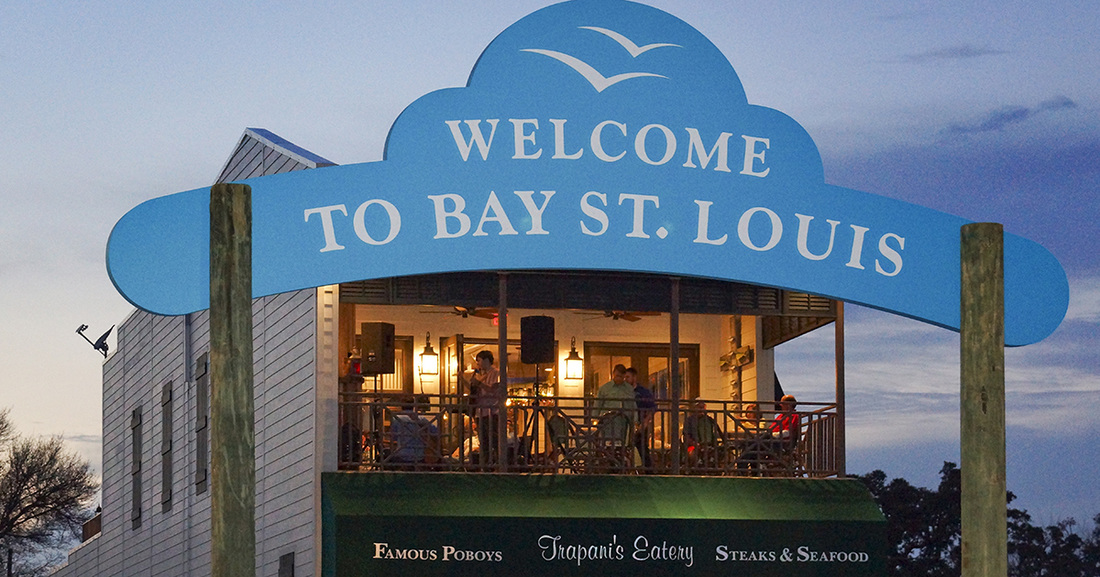

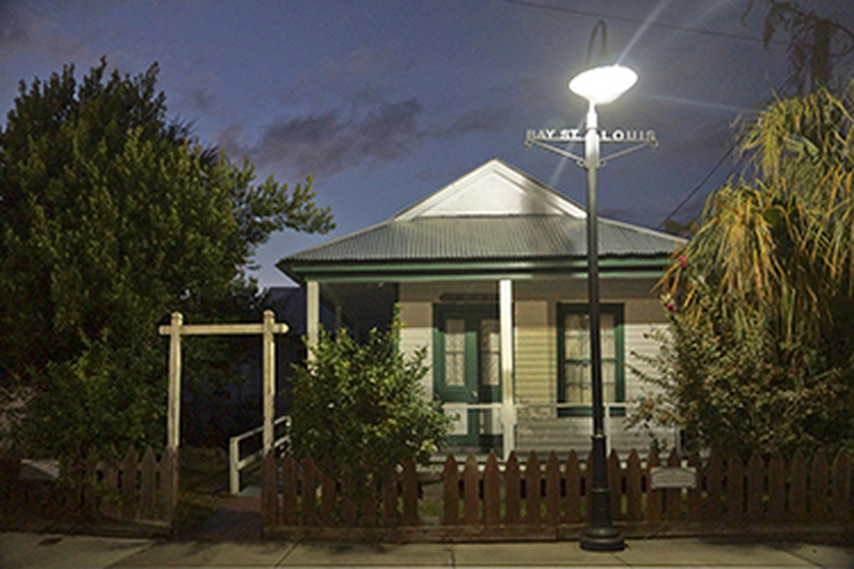
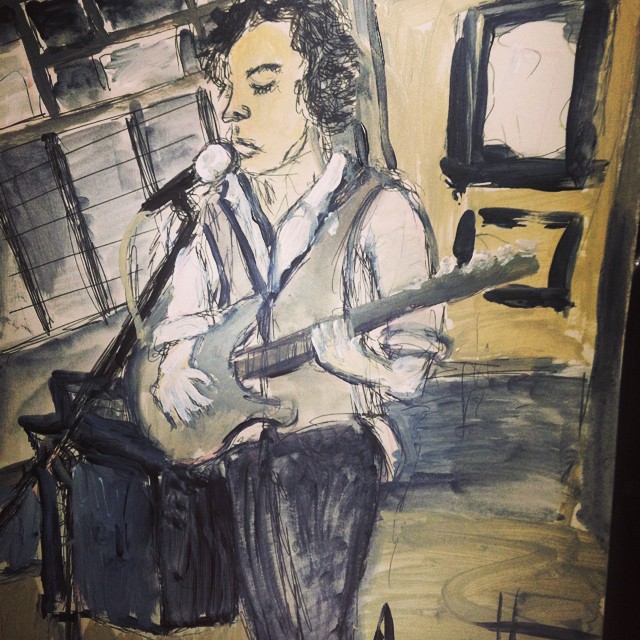

























 RSS Feed
RSS Feed

















